#essentially it’s not his style or anything it’s the way he depicts black people
Text
i went to massy books (Indigenous owned and operated!!!) in Vancouver today and got a copy of the the north west is our mother by jean teilet and full metal indigiqueer by joshua whitehead- which is a rare find but i’m so excited. i read one poem from it for class last semester and it ruined me. i don’t love all of kent monkman’s work but the painting on the cover of full metal indigiqueer is so good, probably one of my favourites by monkman
#i’ll post pics later#and i can explain the kent monkman thing more too#essentially it’s not his style or anything it’s the way he depicts black people#and it’s not the way they look#monkman just has this habit of positioning himself/his altar ego miss chief eagle testickle#as like a saviour of black people#idk just like stay talking about your own history mr monkman#idk if his ancestors ever even interacted with the trans atlantic slave trade so idk why he did that#i appreciate the way he critiques emily carr and other famous canadian land scape painters though
6 notes
·
View notes
Text
Cal stared at the racks of socks, not entirely sure what to do. There were so many colours and so many styles. The advertising boasted all kinds of benefits, overwhelming Cal who'd never had to choose things like this for himself before. Since when were socks anything other than simple things to cover your feet and keep them warm? Did he need wicking socks? Climbing socks? Suit socks? Sport socks? He glanced at Greez, only to see him busy loading up their cart with other essentials further down the aisle. BD-1 beeped, making suggestions about which socks Cal should choose, his taste leaning to ones with bright colours and 'funny' captions. BD points out a pair depicting a grouchy looking person.
"'Don't talk to me until I've had caf'," Cal read aloud. "Funny, but I prefer tea to caf."
BD-1 announced Cal needed to work on his sense of humour and carried on exploring.
Greez came over. "Made up your mind?"
Cal sighed and pointed to the multipacks of plain black socks. "Those will do. I'll never accidentally wear odd socks that way."
Shaking his head and muttering under his breath about Jedi frugality being the death of self-expression, Greez picked the pack Cal pointed at. Then he grabbed a colourful selection that claimed to be good for 'people always on the go'. BD-1 whooped, and he and Greez shared a fistbump.
"See?" Greez said. "BD gets it."
Cal looked at them both. "Gets what?"
"Not everything has to be functional. Who cares if you wear odd socks? Have a little fun. Wear these." He tapped the brightly coloured collection. "Pink's your colour."
"Okay," Cal said. "Thanks, Greez."
BD-1 hopped onto the shelf of comedy socks and beeped to get Greez's attention, bopping on a pile of socks. Greez looked, picked up the pair BD pointed out, and laughed. "Perfect. I love them." He threw two pairs of different sizes into the cart as BD hopped back onto Cal's shoulder.
"I'm gonna go pay," Greez said, heading off.
Cal looked at the socks BD had chosen and laughed.
'I Love My Asshole Kids' they read.
#star wars jedi: fallen order#jfo minific#jfo headcanon#cal kestis#bd 1#greez dritus#inspired by my brother's insistence at only buying black socks
54 notes
·
View notes
Text
On January 1, Mike Neville gave Midjourney the following prompt: “Steamboat Willie drawn in a vintage Disney style, black and white. He is dripping all over with white gel.”
There’s no polite way to describe what this prompt conjured from the AI image generator. It looks, very much, like Mickey Mouse is drenched in ejaculate.
At the start of every year, a crop of cultural works enters the public domain in the United States. When copyright expires on particularly beloved characters, people get excited. This is an especially eagerly anticipated year. An early version of Mickey Mouse, colloquially known as Steamboat Willie, entered public domain in 2024 after nearly a century of rigorously enforced copyright protection. Within days, an explosion of homebrewed Steamboat Willie art hit the internet, including a horror movie trailer, a meme coin—and, of course, a glut of AI-generated Willies. Some are G-rated. Others, like “Creamboat Willie,” are decidedly not. (Willie doing drugs is another popular theme.)
While a contingent of the people sharing naughty Willie images are simply goofing around, others had surprisingly sober-minded intentions. Neville, an art director who posted his image on social media using the handle “Olivia Mutant-John,” has a lively sense of humor, but his experiment wasn’t solely a scatalogical joke. “My interest in generating the assets was to explore copyright thresholds and where the tools are currently,” he says. He’d noticed that it was easy to find examples of copyrighted characters on popular image-generating tools (a point also recently made by AI scientist Gary Marcus, who posted AI-generated depictions of SpongeBob SquarePants as an example) and wanted to see how far he could push an image generator now that Steamboat Willie was in the public domain.
Neville isn’t the only person conducting AI Willie experiments with copyright on his mind. Pierre-Carl Langlais, head of research at the AI data research firm OpSci, created a fine-tuned version of Stable Diffusion he called “Mickey-1928” based on 96 public domain stills of Mickey Mouse from the 1928 films Steamboat Willie, Plane Crazy, and Gallopin’ Gaucho. “It’s a political stance,” he says.
Langlais firmly believes that people should be paying closer attention to where AI tools get their training data; he’s working on several separate projects focused on creating models that train exclusively on public domain works to that end. He whipped it up in hours, because it’s essentially a filter laid atop of Stable Diffusion, not a totally custom data set. (That would be a far more labor-intensive project.)
As anything related to AI artwork tends to stir up controversy, he’s been pleasantly surprised by the joyful reception his tool has received online; because it is built on a tiny set of low-quality images, the works it creates tend toward the rough-hewn and glitchy. (“You should not expect consistently good results from Mickey-1928,” his project description warns.) Langlais originally intended to add to the data set to improve its quality, but now he’s going to leave it as is. “I think people liked that it was slightly bad,” he says. “It created some funny results.”
Others liked it precisely because of its political valence. “It’s pretty satirical,” says emerging technology researcher Eryk Salvaggio. The Steamboat Willie iteration of Mickey Mouse entering the public domain is a big deal partly because people love all things Disney, but also because Disney played a role in shaping contemporary copyright protections specifically to shield this character. As Salvaggio points out, people nicknamed the Copyright Term Extension Act of 1998—which, as its name suggests, extended copyright terms—as the “Mickey Mouse Protection Act,” because Disney lobbied aggressively in favor of prolonging copyright.
“This particular Mickey Mouse, from Steamboat Willie, is now in the public domain at a time when questions about what we can grab and use are up for debate,” Salvaggio says. “It’s an interesting confluence.”
At least some of the AI-generated Steamboat Willie images are explicit middle-fingers to Disney. On the social network Bluesky, for example, a user called Virtual Balboa posted an image of Willie smoking a joint. (They asked to be identified by their pseudonym so their family “doesn't get swatted by some random lunatic.”) In an email, they detailed their motivations for creating doobie-smoking Willie. “I love the idea that Disney will be forced to spend money and resources looking at my stupid pictures to check if they are too far removed from Steamboat Willie to count as public domain,” they wrote.
While people like Langlais and Neville are experimenting with Steamboat Willie in part to test the guardrails put in place by generative AI companies, Virtual Balboa is deeply skeptical that enhanced copyright protections will benefit regular people: “Any guardrail-type laws will be written by computer-illiterate geriatrics and only make life harder for people trying to use ‘ethical AI’ to do legitimate work.”
Putting aside considerations of how digitally savvy regulators may or may not be, the rush to remix Steamboat Willie with AI tools demonstrates, once again, the growing inescapability of these products.
1 note
·
View note
Text
The Voyage So Far: Water Seven
east blue (1 | 2) || alabasta (1 | 2) || skypiea || water 7 || enies lobby || thriller bark || paramount war (1 | 2) || fishman island || punk hazard || dressrosa (1 | 2) || whole cake island || wano (1 | 2)
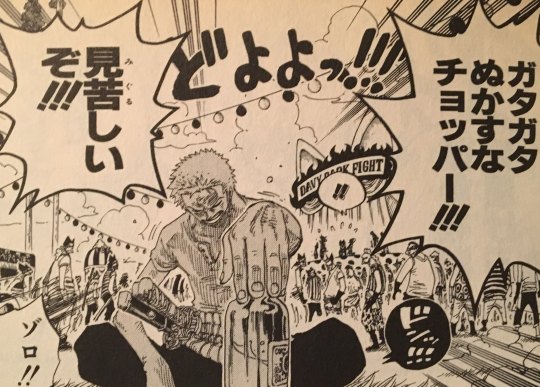
i’ve mentioned several times before that the davy back fight is one of my least favorite arcs, mostly because i found it very dragging and tedious when i was reading it, but there are a couple things i really like in it, and, perhaps unsurprisingly, most of them have to do with zoro. i really like his moment here with chopper, and it also showcases his ability to act as more of an authority figure to the crew, which is something that makes a substantial return after enies lobby with the matter of usopp’s return.
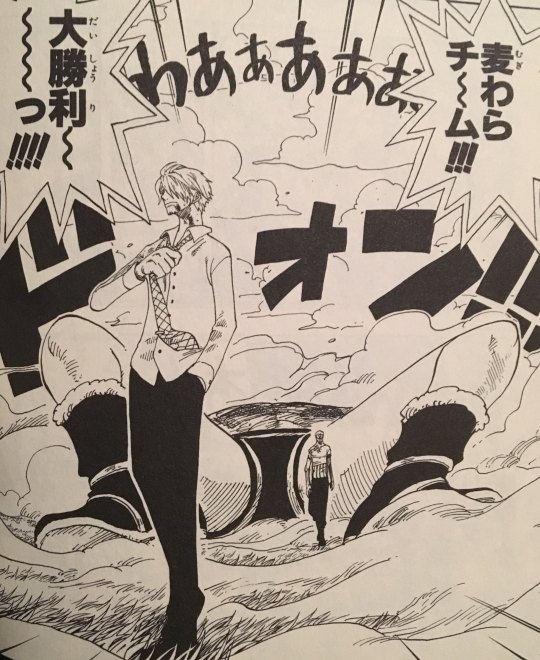
zoro and sanji’s match in the davy back fight is far and away my favorite part of the entire arc. it’s just really fun.

like i said, this arc isn’t a favorite of mine, but i do definitely understand why it’s important to the saga and greater story in a couple different ways. one of them is that it’s just an easy, lighthearted detour that both gives the audience a chance to breathe and the strawhats a chance to showcase just how much they love each other and work well together- which turns into a fucking sledgehammer to the skull in the next arc when that unity is directly threatened. and the other reason this arc is important...

...is because of aokiji.
aokiji’s introductory scene is a brutal showcase of absolute power, and a very clear reminder that the strawhats are still very much little fish in a very, very big pond. all of the strawhats are impacted by this to some degree- it’s how badly they get curb-stomped here that leads luffy to come up with his gears as a way of closing the huge power gap he’s just learned about.
most important, though, are robin and usopp. for robin, this is a stark reminder of the fact that the government will never stop hunting her down; for usopp, who’s less obvious, it’s the seeds of the full-blown inferiority crisis that will later explode with the news about merry. both of their arcs throughout water 7 and enies lobby, essentially the twin emotional backbones of the saga, start right here.
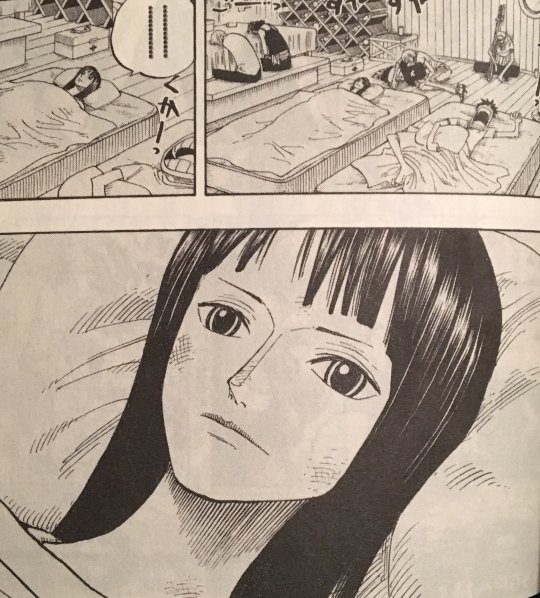
i really like that the other strawhats all fell asleep waiting for robin and luffy to wake up. it calls back to them doing the same when nami was sick before drum, and also it’s just so fucking sweet.

water seven is my favorite island, full stop. if i was going to live anywhere in one piece’s world, i’d want to live on water seven. it’s just so creatively designed and visually great, with the canals and the tiered city and the massive fountain in the middle. the supporting cast are still one of my favorites, and the culture feels very real and authentic. i just love water seven a lot.
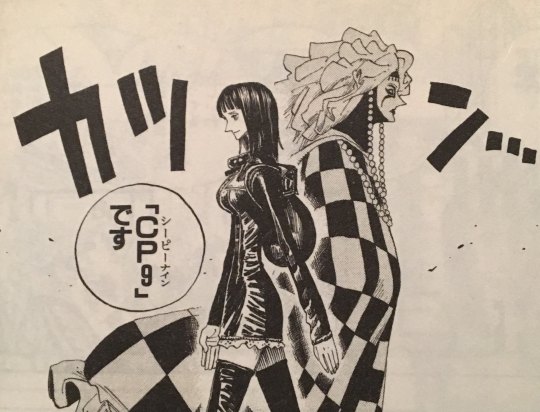

i just said it but it bears repeating- the water seven supporting cast is really good. iceburg, the galley-la shipwrights, franky and his family, kokoro and chimney are all really memorable, and most of them are really likable, too- and cp9, with all their eccentricities, fit in perfectly. water seven’s cast is very interconnected, as well, and their relationships all feel very believable.
all of which, of course, only makes the later treachery hurt all the more.
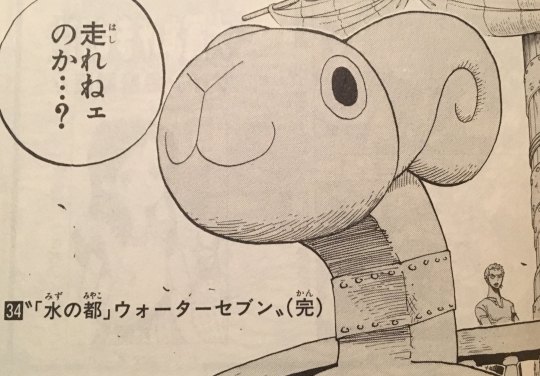
the atmosphere of water seven is really, really well done. the bad starts slow, with the news that merry is unfixable, and then continues into an accelerating downwards spiral of hopelessness: usopp and luffy’s fight and usopp leaving the crew, robin’s seeming betrayal, the assassination attempt on iceburg, the city and galley-la turning on them as a result, and the agua laguna- it just gets worse and worse and worse.
and then, after they’ve been stomped down about as far as they can go and come out alive anyways, they pick themselves back up again and go to save their friend, because that’s what the strawhat pirates do.
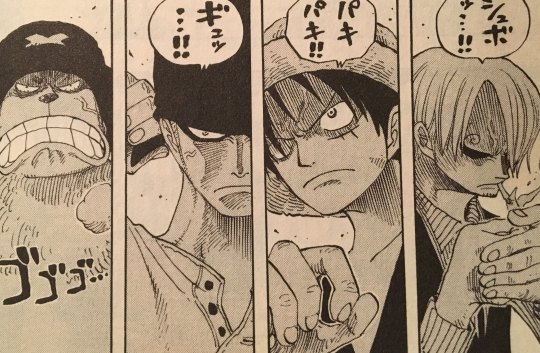
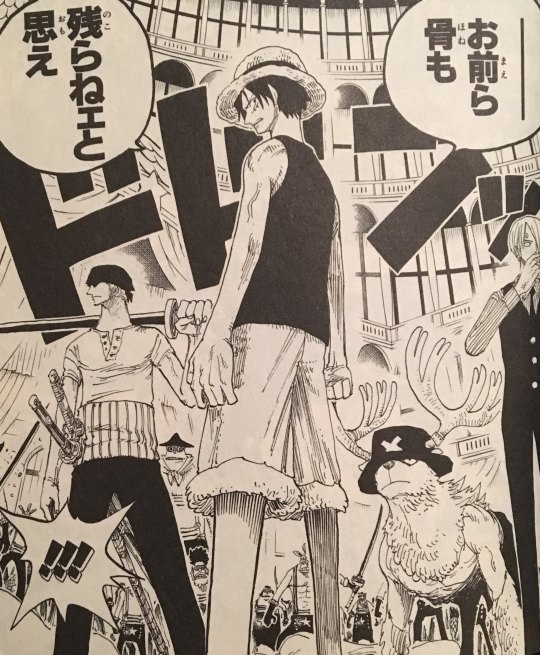
i just really like getting to see these four going feral on the franky family, it’s one of my favorite scenes in this whole arc. in general, i tend to love the moments where luffy specifically gets properly angry, and we get a lot of them in this arc.

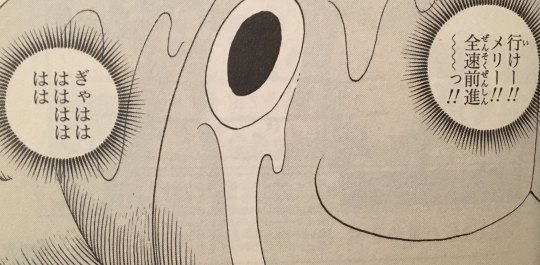
even though the fight between luffy and usopp is genuinely very tense and fast-paced and would probably be exciting if it were any other two characters fighting, it never really feels anything other than melancholy. i think that’s a testament to just how good oda is at setting the mood of the scene. it’s made very clear, especially through the reactions of the other characters- merry ‘crying’ is fucking heartbreaking- that this is nothing less than a tragedy.

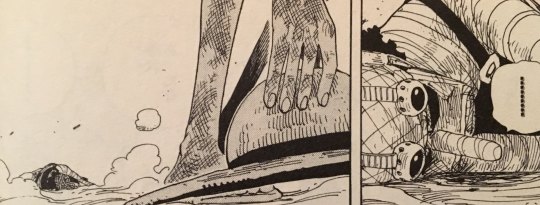
:(

i think it’s kind of interesting we aren’t shown franky’s face until about halfway into water seven. prior to this, we’re given pretty much only reasons to hate him, with his theft of the strawhats’ money and the franky family beating usopp to shit. but just after this point is when we start getting our first humanizing and sympathetic moments for him, starting when he gets worried and a little frantic when he hears about the attempt on iceburg’s life.
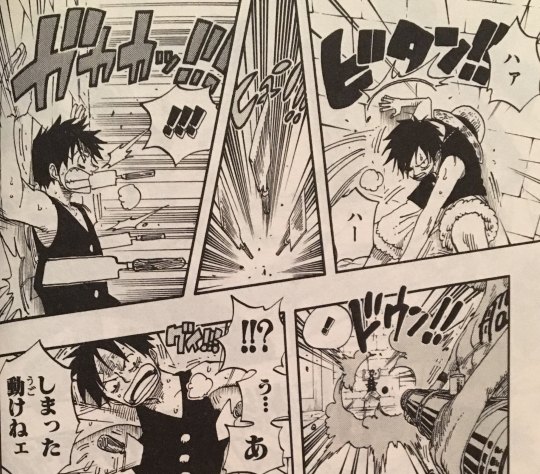

i just really, really like the way some of these water seven action sequences are depicted. they feel very tense and desperate, which matches the general mood of this part of the arc perfectly.


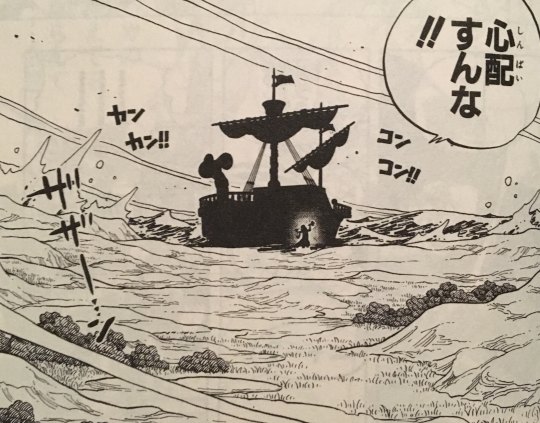
this panel of usopp working on merry always reminds me of the shots of the klabautermann doing the same during skypiea. i’m not sure if it’s even intentional, honestly, but it’s an extra little bit of heartbreak either way.
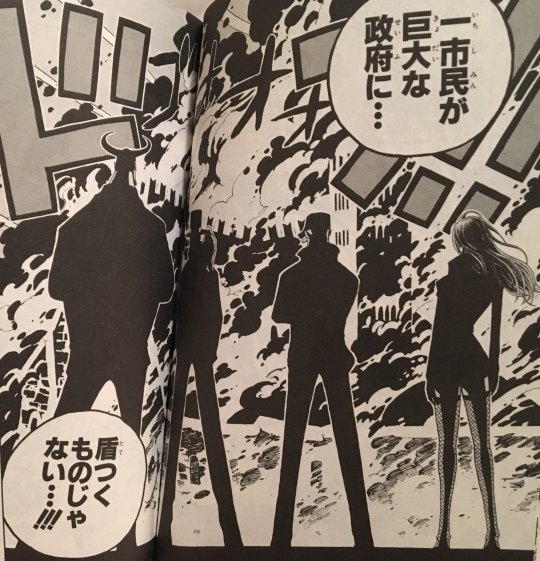
one piece has a lot of amazing spreads, but this might be one of my favorites for sheer impact. cp9, watching as the city they’ve lived and worked in for years burns down in a fire they set, satisfied by a job well done. it’s almost all in black and white with very little grey, which creates some fantastic contrast, and their pitch-black silhouettes against the nighttime inferno are just striking.
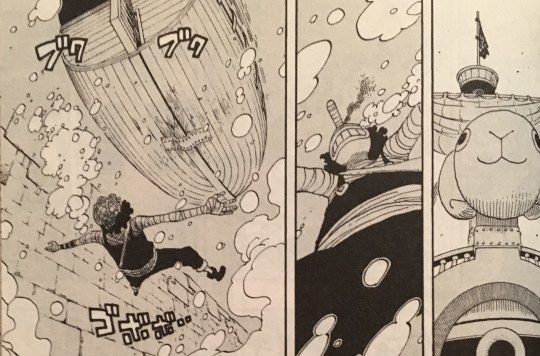
this entire scene between usopp and franky, as usopp works on the merry and franky gives him advice and tries to make him see its hopeless and they kind of awkwardly, accidentally bond, is probably my favorite in the whole of water seven. it was also the scene that singlehandedly made me love franky as a character.
they have a really good, really enjoyable dynamic, and at the same time the conflict between them is real and understandable, and brought about because they’re both trying to do the right thing.

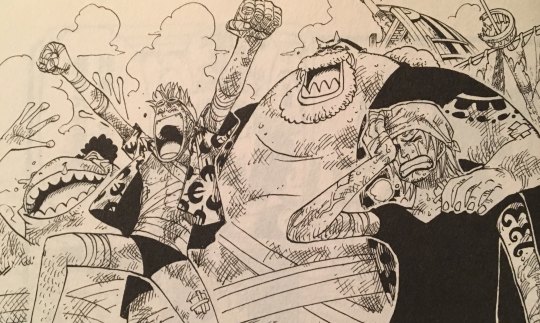
tom’s workers are one of my favorite little groups of characters in the whole of one piece’s story, and they deserve more appreciation. they’re family!! a little family of broken pieces who worked together to build something really, really amazing. and they still care about each other in the present, even though they got shattered apart so badly and none of them ever really recovered.
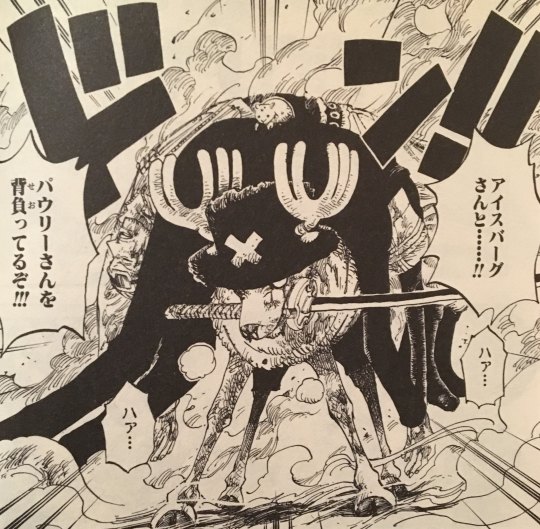
this is a tremendously under-appreciated chopper moment. not only did he carry two full-grown men out of a fire, he even managed to get zoro’s sword and iceburg’s hamster. extremely cool of him.
this is also the exact moment the strawhats’ collective luck begins to turn: chopper saves the day, and nami learns that robin did what she did to protect them, and sanji gets aboard the sea train, and from there it’s a no-brakes train from their very lowest low straight to the triumph at enies lobby.

i love all the shenanigans sanji gets up to with the sea train, i think the whole sequence is absolutely one of his shining moments. it’s always a delight to see sanji get up to Sneaky Bastard Bullshit, and the whole thing is just so fun, which is a dearly needed breath of fresh air after how relentless this arc has been until this point.
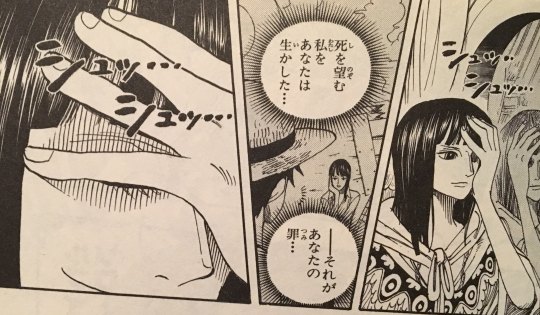
robin’s little smile when thinking of luffy and when she joined the strawhats... :( i’ve noticed it’s a recurring trend for strawhats who try to leave the crew to flash back to when they joined as they do. usopp has it earlier this same arc just before leaving, and sanji does it in whole cake island in the sanji vs. luffy chapter.

i really like how much everyone comes together at the end of water seven leading into enies lobby. after how fractured and fraught things have been throughout the arc, both within and without the strawhat crew, it’s great to see them not only all united again for a common goal, but with a huge group of allies at their backs.


these three are SUCH a hilarious team, and i would love to see them work together again like this sometime. they’re literally just clowning on the marines all the way up the train, it’s fantastic.

factually i understand sanji’s aversion to fighting with his hands and his fighting style is very unique and cool and also meaningful to him because he learned from zeff, and also if i remember right it’s implied he learned how to swordfight from the vinsmokes which makes it very reasonable he would want absolutely nothing to do with that skillset
but speaking purely in terms of stupid idiot lizard brain i think sanji should fight with knives more
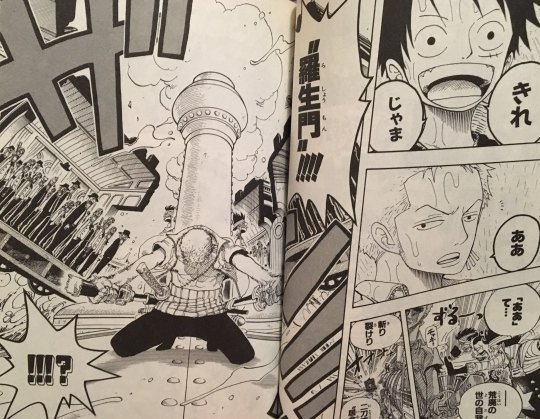
this is another of my absolute favorite spreads, and i think what makes it for me is the casual confidence- luffy tells zoro to cut the train, and zoro does, both of them with no doubts at all about zoro’s ability to do so. it really goes to show how far they’ve come from back in east blue when zoro couldn’t even cut luffy out of a metal cage.

there’s something very impactful about the fact that of all the strawhats, robin gets this speech from usopp. usopp, who’s had the worst falling-out with luffy in the series to date, is the one who tells robin: you haven’t left the crew yet, you can’t leave the crew yet, luffy is coming to get you. believe in him.

franky’s “existing is not a crime” line is one of the most memorable and iconic lines from this entire saga, and for good reason. it sums up one of the main themes of not just this arc but also the series as a whole- the very same idea will come up again for ace during marineford, and in law’s backstory as well. it’s never a crime to just exist, and people should not never be persecuted for their blood or heritage. one piece doesn’t fuck around with its theming, it really doesn’t.
to be continued next time, with enies lobby!
191 notes
·
View notes
Text
it’s t-t-t-t-time for another newt bae-science fic rec extravabonanza! same rules, same boys, same bullshit! let’s get into it:
a beginning; a second chance by @dykesword
other newt and i have a long and intricate ritualistic battle to become the alpha newt, but i gotta give credit where it’s due. if you like to annotate your books for fun, this fic will give you a looooong comment you’ll want to write, and for good reason! there’s a lot of really well done metaphor and character detail in here, while still keeping a very soft, melancholy but with a hopeful edge tone. and also, like, the care and detail in which newt’s mental state in the aftermath of the precursors’ abuse is depicted is so so good, and delightful to read
husbandly duties by @kingeiszler
i am soooo biased with this one bc technically it was made for me but GODDAMN it’s good. this shit has everything: gottlieb trio sibling dynamics, vanessa in giant femme earrings, hermann yearning, newt and karla infodumping together, newt’s terrible and accurate gaydar, gay crime, the newmann dynamic and why it works boiled down to its bare essentials, pride and prejudice glasses touch, and neon green acrylics. required reading for the vanessaverse
Say That Again by @robertfrobisherslover
WOOF. if you like mutual pining and lack of communication from men with rocks for their emotional processing centers, and guncle (gay uncle) newt and hermann and KILLER artsy sex scenes, and themes of words unsaid in a story about LANGUAGE..... oogoogogoogouhufug. the writing style is clear and well paced, i LOVE little mako’s scene she’s such a cutie, and there’s like. a line. that’s a play on the whole “it’s always been you” trope. that lives in my mind rent free forever.
speak right to my heart without saying a word by @thekaidonovskys
i’m just gonna paste the comment i left on it here, because that sums up what is so absolutely incredible about this fic the best:
so sometimes you stumble on a piece of fiction that you add to your little collection of stuff you would show a person if you wanted them to understand a part of you that you can't quite explain eloquently, or it would take too long, etc etc, and i've never really found something like that for my autism until now, which, like, poggers. and i'll be as straight up as i can while still being the biggest lesbian in the great state of ohio (not a hard feat but alan invented computers so i love continuing on the autistic tradition of being a living miracle), the chameleon effect hit me like a mack truck. catholic school in the deep south is the most potent and effective form of ABA therapy imaginable :/. so sometimes i wonder what i would be like if i didn't have such a strong ability to pass, and here's where we finally get to the part of this comment where i just vomit compliments at you: you nailed it. you got it. i don't know if you're on the spectrum, but either way, well fucking done. trauma therapy research talks a lot about healing fantasies, which are fantasies, usually in the form of daydreams, that abused/neglected/traumatized/etc people create that directly address a struggle they have and take the form of a scenario in which that struggle is helped in some way. it could be an abusive parent repenting and showering them with the love they never had, or someone finding them during a panic attack and somehow knowing how best to comfort them without having to ask, or being intimate with someone and having a scar or physical deformity they've been shamed for be given attention and care. and i think you have created the ultimate perfect healing fantasy for autistic people, or at least those with """"high functioning"""" autism. it has a character who is visibly and undeniably on the spectrum having the pain and trauma going through life like that causes being acknowledged and validated, they are purposefully paid attention to because person b genuinely likes them and wants to understand and respect who they are and how they function in the world, and thus get The Mortifying Ordeal of Being Known as well as the eventual rewards of being loved, person b makes a genuine effort to help teach them social skills in a way they can understand and learn through and is there for them when these skills are being practiced, their space and boundaries are respected but they aren't infantilized or thought of as an emotionless robot, and they receive love and comfort on their own terms not despite of but because of who they are, even specifically being asked not to change the way they are because that way is lovable. they are openly desired. writing is my fucking JOB and it's still difficult to put into words how much you got 100000% right about the dream with this fic. i have been in the EXACT and i mean EXACT same situation as hermann when he asked newt if it was his personality itself that made people not like him, because i deadass made a spreadsheet of all my personality attributes i thought could be preventing me from making friends in college, and then asked my fellow nd friend to see if there was anything i was missing. so i guess what i'm trying to say is that this amazing, and i'm bookmarking it and putting it on my next fic rec post, and maybe one day way way in the future if i ever get a partner i want to explain the whole autism thing to, i'm gonna have them read this.
The Facts With Newton Geiszler, PhD by what_alchemy (NSFW)
storytime: i read this fic a few years ago, completely forgot the title and author, and ended up thinking about the part where hermann admits to having fucked a trailer hitch when he was a teenager, at least once a week. last november, i say to my friend samara on twitter, head of the BSHCU (buttslut hermann cinematic universe), hey this seems like something you’d have read, do you remember a fic where... and samara says FUCK i do know what you’re talking about lemme find it. so if the fact that i have been looking for this fic for like, two years, and that it contains a moment so iconic all i had to say is, “hermann says he fucked a trailer hitch” and she IMMEDIATELY knew what i was talking about, does not convince you to read this... go back to catholic school i guess.
Feeling Blue by TempusPetrichor
fics where newt goes back to work as a biologist, especially a xenobiologist, post pru are really interesting, and usually have something neat to say about recovery, how it isn’t linear, how it often involves us returning to things we love for comfort, etc. this one sure does! some good emotional and physical h/c, LOVE the use of the ghost drift, and it’s always fun to see post pru fics use dialogue very obviously taken from dbt, trauma-specific therapeutical texts, and anything that shows the author has experience with, or did their research on, ptsd therapies.
You’re Everyone That Ever Cared by KlavierWrites
you know a fic is good when it’s an only 9k slowburn and still manages to reach infinite regress levels of are you fucking KIDDING GO TO THERAPY. newt “acts of service” geiszler may have a little misplaced misogyny due to his broken woman-centric gaydar. as a treat. the fucking. post-drift scene where hermann subtextually screams “LOOK IN OUR BRAINS YOU FUCK I’M IN LOVE WITH YOU I JUST HAVE AUTISM AND CAREER IN STEM DISORDER” is soooooo. god just hermann in general in that scene is great. if you like classic mid 2010s era newmann, ghost drift romance, and good ole mutual pining, this is a treat.
Baby, You're Hotter than my Bunsen Burner by SkySongMA
moronosexual hermann representation is something that can actually be so personal
Times of Stress by RadioMoth
the boys are processinggggggg. man what a good, quick and powerful punch to the gut. if you like post-pr1 catharsis and physical h/c, AND are the one friend that likes to comment at the end of the movie that hey newt got beat the fuck UP, check this one out.
black tea by @faggotcas
okay first of all, god fucking tier url, lee. second of all, food as a love language is my SHIT. i love the very slow relationship development here, where you see them making a genuine effort to get along and that in turn leading to feelings reigniting. it’s such a sweet little moment of a fic, with a nice atmosphere and tone to fit it
now here’s the part where i usually drop my latest fic, but i haven’t written one this month because i’ve been busy launching an audio drama! you can find it here, it’ll be right up your alley if you like cryptids and gay scientists and enemies to lovers and good ole americana, but since this is a newmann post, i’m gonna recommend the pacific rim audio drama duology i did a while back! part one is called conversations from the brink, and it’s a little slice of the pr3 we better fucking get from streaming that godawful looking anime. love and lesbians to everyone ❤️
52 notes
·
View notes
Text
New Queer Cinema
Starting from the late 1980s through early 1990s, a “new wave” of queer films became critically acclaimed in the film industry, allowing the freedom of sexuality to be featured in films without the burden of approval from the audience. This raw and honest film genre displays the truth, secrets, and vulnerability of the LGBTQ+ community and the representation that is deserved. The New Queer Cinema movement was started by scholar Ruby Rich who wrote “This movement in film and video was intensely political and aesthetically innovative, made possible by the debut of the camcorder, and driven initially by outrage over the unchecked spread of AIDS. The genre has grown to include an entire generation of queer artists, filmmakers, and activists.” (Rich) This movement started from Rich’s writing piece, not the filmmakers themselves. An article by Sam Moore discusses Rich’s start of the movement. He states, “Rich acknowledges that the films and filmmakers she considers under the umbrella of New Queer Cinema (including Todd Haynes, Cheryl Dunye, Isaac Julien, Gus Van Sant and Gregg Araki), don’t share a single aesthetic vocabulary or strategy or concern.” Instead, they’re unified by the ways that they queer existing narratives, subvert expectations and foreground queerness in material where it had been only implicit” (Moore). The journey through the New Queer Movement started with Ruby Rich defining the movement through her writing and inspiring filmmakers to continue producing movies with the correct representation.
Actress from Gone with the Wind Susan Hayward claimed that Queer cinema existed “decades” before an official title was given to the genre. French filmmaker Jean Cocteau created Le sang d'un poète in 1934 which is documented as one of the earliest Queer films. This avant-garde style of film is associated with Queer cinema filmmakers such as and is displayed in many upcoming films such as Ulrike Ottinger, Chantal Akerman and Pratibha Parmar. The influence of Queer theory that emerged from the late 1980s helped guide the movement with the creators. The theory states "Challenge and push further debates on gender and sexuality.” Another closely related statement by feminist theory states,"Confuse binary essentialisms around gender and sexual identity, expose their limitations.” Queer cinema filmmakers were sometimes known to depict their films in a “mainstream” way that is agreeable to the audience. There was no exposure to the truths and horrors that the LGBTQ+ community experience and had a lack of representation of historical elements or themes. The concept of “straightwashing” was described to filmmaker Derek Jarman’s 1991 historical film Edward II. This film received backlash from the LGBTQ+ community due to the film’s queer representation catering to heterosexuality and heteronormativity.
The truth of the movement was for Queer films to stop romanticizing or bringing positive images of gay men and lesbian woman. The push for authenticity and liberation for the community needed to be represented in films. New Queer films were more radical and sought to challenge social norms of “identity, gender, class, family and society.” (Wikiwand.com).
To quote the amazing drag queen of all time RuPaul “Everyone is born naked, and the rest is drag” the idea of gender identity and representation in the community is unlimited, why do you need to follow the norms of society when anything is possible? The late 90s documentary Paris is Burning introduced the audience to drag culture in New York City and the people of color who were involved in the community. The term “aesthetic” was repetitive in the research of New Queer Cinema which suggests the significance involved with the style of the films. The documentary includes the aesthetic of the drag world involving the makeup, fashion, and politics. AIDS activism was involved heavily in New Queer films and ridiculed the failure of Ronald Reagans acknowledgment of epidemic and the social stigma experienced by the gay community. Conservative politics occurred during this movement resulting in lack of media coverage and government assistance for the LGTBQ+ community. This political struggle did not discourage the community and the fight is still continuing today.
Beginning in the 2010s LGBT filmmakers Rose Troche and Travis Mathews created a “newer trend” in queer filmmaking that evolved toward more universal audience appeal. In an article from Wikiwand.com states,
“Rich, the originator of the phrase New Queer Cinema, has identified the emergence in the late 2000s of LGBT-themed mainstream films such as Brokeback Mountain, Milk, and The Kids Are All Right as a key moment in the evolution of the genre.[20] Both Troche and Mathews singled out Stacie Passon’s 2013 Concussion, a film about marital infidelity in which the central characters' lesbianism is a relatively minor aspect of a story and the primary theme is how a long-term relationship can become troubled and unfulfilling regardless of its gender configuration, as a prominent example of the trend” (Wikiwand).
The film Watermelon Woman was one of the first queer films I watched for a film class, and this film allowed me to dive deeper into the subject I care a lot about which is the representation of queer narratives about woman of color. Queer woman and men deal with the most discrimination. It is unfair and cruel to see the difference of racial treatment in the LGBTQ+ community because the backbone motto is full exclusion and equal rights. The film Watermelon Woman shined light on LGBTQ+ black woman and interrogated the “Mammy” stereotype that most films depict about black actresses. Minority narratives were pushed into the circuit of the movement with developed into the later academy-award winning film Moonlight that displays those representations makes film history!
Films to recognize in the height of the New Queer film movement are
Mala Noche (1986), Gus Van Sant, was an exploration of desire through the eyes of a young white store clerk named Walt and his obsession with a young undocumented immigrant named Johnny. The film is shot in black and white on 16mm film, contains many of the early Van Sant fixations that viewers would later see get refined in My Own Private Idaho, including male hustlers, illegality, and class.
Chinese Characters (1986), Richard Fung, this early film asks still-pressing questions about the nature of gay desire when it’s mediated via pornographic images of white men. The video defies genre, mixing documentary with performance art and archival footage to explore the tensions of being a gay Asian man looking at porn.
Looking for Langston (1989), Isaac Julien, this short film, a tribute to the life and work of Langston Hughes, is a beautiful and vibrant elegy. Julien creates a lineage of queer black ancestors for himself. The film moves like the poetry it recites, playing with the gaze and how various eyes look upon the black male body.
Tongues Untied (1989), Marlon Riggs, guided by the writer Joseph Beam’s statement, “Black men loving black men is the revolutionary act,” Riggs goes through his own complicated journey of homophobia from other black people, and then racism in the gay community, to find a community of queer black people.
Poison (1991), Todd Haynes, the three parts of the film tell a story about ostracism, violence, and marginality: the bullied child who allegedly flies away after shooting his father in order to save his mother (“Hero”), a brilliant scientist who accidentally ingests his own serum to become the “leper sex killer” (“Horror”), and a sexual relationship between two men in a prison (“Homo”). Exploits radical work that Haynes later uses in his other films.
The Living End (1992), Gregg Araki, the film follows Luke, a sexy homicidal drifter who has a distaste for T-shirts, and Jon, an uptight film critic in Los Angeles. Both are HIV-positive, and as their relationship unfolds, they fight about being respectful or lustrous.
Swoon (1992), Tom Kalin, a black and white film that romanticizes wealthy Chicago lovers kill a 14-year-old boy named Bobby Franks because they want to see if they are smart enough to do it. The murder is more a play of power between them, with Loeb weaponizing sex as a way to control Leopold.
Rock Hudson’s Home Movies (1992), Mark Rappaport, Rock Hudson’s Home Movies is a documentary made up of glances and innuendos from Rock Hudson’s persona, displaying how this dashing, leading man of the Hollywood Golden Age was a closeted gay man.
MURDER and Murder (1996), Yvonne Rainer, is known for her experimental filmmaking and choreography, this film represents a late-in-life lesbian named Doris who suffers from neuroses and breast cancer. Her partner, Mildred, a queer academic, tells the story of their romance as older women. Rainer also makes appearances throughout the film in a tux, going on rants about smug homophobic parents while showing her bare chest with a mastectomy scar.
1992 was the year of the highest amount of New Queer films being produced and exceeding box office expectations. Upcoming 2000s films such as “Booksmart”, “Call me by your Name”, “The Prom”, and “Rocketman” all represent the truths and authenticity of the LGBTQ+ community and creates pathways for more films to include these cinematic themes. The movement continues to grow and succeed in the film industry with new creators and actors being more honest about the LGBTQ+ community.
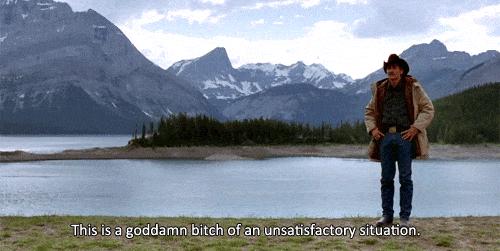



22 notes
·
View notes
Text
Let’s Get Dressed (FULL)
A long, long time ago (2013, to be exact), H from TheWritersHelpers and C from WriteWorld (inactive) got together for a collaboration on how to write and describe clothing. This is the fruits of their labor.**

Anonymous asked: Any tips on describing clothing?
The Writer’s Helpers and WriteWorld have teamed up to create a series on clothing and fashion. These articles were primarily written in the context of how to write about clothing.
Clothing is a term that is used to describe items worn by humans (and recently other animals, like tiny dogs), either for practical reasons or for reasons of style. Since humans have been wearing clothing for tens of thousands of years, it’s probably best to narrow down the timeframe for the clothing you’re describing to a particular era, year, season, etc. With that in mind, let’s talk about fashion!
Fashion (n): A popular trend, esp. in styles of dress, ornament, or behavior.
We’ll be discussing the dress and ornament portion of this definition. Now, there are a few ways that fashion might affect your description of clothing: Your character might be fashionable, ahead of the times, behind the times, or apart from fashion entirely. All of this is going to make a difference not only in what the clothing actually is, but also in what there is to describe about said clothing. Let’s have a look at these different positions for your character on the fashion scale:
1. Fashionable. Fashionable characters are insiders. They are usually very in tune with what is hip with the kids. Fashionable characters (for an example, read the booksThe Devil Wears Prada,,The Princess Diaries, and Confessions of a Shopaholic) can usually have a backstory where they once were not fashionable- perhaps the unpopular nerd- and with a little help or luck, improve their fashion sense. Magazines such as Vogue, Seventeen, or GQ can act as guides for your fashionista characters in present day. For more on eras, check out the “Links to Look At” section at the end of this article.
If you’re writing a fashionable character, you might use clothing labels to describe your character’s clothes as opposed to just describing the color, size, etc. You might also want to thread themes through the character’s style, such as the season or a trademark for the character (think always wears yellow or channels Audrey Hepburn on the red carpet).
Materials vary often in fashion, but fashionable characters are more likely to wear expensive fabrics and jewelry. After all, they have a reputation to uphold.
2. Ahead of the times. These are the trendsetters, the fashion pioneers, the people who pave the way for others and push the boundaries in all the right ways. Trends come and go, but the fashion forward never look back.
Characters wearing forward-thinking fashion (or couture) might find themselves in fur and duct tape and think nothing of it. Descriptions of their clothing might tend toward the bizarre and using eclectic words may help drive home the eccentricities of their style. For example:
Her aluminum coat sparked like Tesla coils in the firelight.
Weird descriptors aren’t a problem for fashion-forward characters. The weirder, the better.
3. Behind the times. There are those unfortunate souls who do not keep up with the fashion popular at the time your story takes place. Whether it’s the 1580’s or the 1980’s, not all fashions are universal. Styles come and go, but if your character’s whole wardrobe was procured twenty years before the story begins, they’re probably not up with the latest fashions. This might arise from monetary constraints or because of isolation, but the simple fact is: not everything is retro-chic.
Retro-Chic (adj): pertaining to the fashionableness of the nostalgic revival of a style.
Characters who are behind the times might have old clothes that aren’t in the best condition. They may not have the vocabulary to describe the clothes they wear or that others wear with any degree of accuracy. This most especially applies to clothing labels or technical terms for the design of clothes as the character is not up on the popular designers and the newest fashions.
Apart from fashion altogether. There are many reasons why a character might be apart from fashion. Fashion is essentially self-expression, and some people don’t care. Take into consideration religious preferences (monk attire is pretty standard), strict parental figures (if your character is a youngster), or time travel (we’re lookin’ at you, Doctor Who).
Characters who stand apart from fashion may also be unaware of the terminology to accurately describe clothing popular at the time and in the place of your story. These characters might not, for example, know the word “silk” and so must describe around the word. They might not have any concept for manufactured material and therefore have trouble describing nylon or faux leather.
Links to Look At:
“Why Do We Wear Clothes?” by vsauce
Glossary of Clothing Terms by allwords.com
Your Guide to Clothing Terms by EBay
---------------------------------------------------------------------------------------
Let’s look at detail. What sort of descriptors could you use, how could you use them, and why?
Try not to go overboard with the description, but make your descriptive words count. Let’s look at an example of a simple description of the two largest articles of clothing on an example character:
She wore a top and a skirt.
That’s pretty basic. “Top”, for example, isn’t very descriptive. After all, women’s fashion is complicated! So, let’s use specific terminology:
She wore a blouse and a skirt.
You might add color:
She wore a black blouse and a gray skirt.
You might add fabric descriptions (Remember, the color describes the fabric now, so it goes before the descriptive word for whatever material the clothing is made of):
She wore a black silk blouse and a gray tweed skirt.
There are other descriptors worth mentioning such as how the clothing drapes or hangs, its age and general condition, its size and length, and the overall feeling toward it from the narrator.
How it drapes: The dress was slinky; it clung to her curves and pooled like water at her feet.
Its age/condition: His jeans were faded and ratty at the seams, especially on the back pockets where there were inch-wide holes.
Its size/length: Her boyfriend’s XXL shirt nearly swallowed her up and fell to her knees like a shapeless potato sack.
Narrator feeling: It was an ugly gray uniform.
With all of these descriptors around, the business of relaying useful information to the the reader about a character’s clothing can get pretty muddled. No one wants to read a description like:
She wore a boring black silk blouse that was over-large, a few years old, and hung blandly from the crest of her breasts. Her shin-length gray tweed pencil skirt was also old and too small for her hips.
There is just way too much going on there. Too many descriptors. Cut out the adjectives and adverbs that aren’t absolutely necessary, the ones that don’t really add anything essential to character or the look and feel of the scene.
You may think that the above example is so obviously bloated that it’s too easy for me to state offhand that you must hack away at its descriptors and leave only the bare essentials. Well, I agree, but it is possible to have a decent bit of description and still overshare. For instance, it might be way too detailed to embroider the blouse and skirt example thusly:
She wore a black silk blouse that shone in the flourescent light of the waiting room. It had loose sleeves that gathered at the crook of her elbows with a little bow and buttons covered in the same sleek material as the blouse. Her skirt was made of gray tweed and slightly out of fashion. The waist cut uncomfortably into her stomach just below her navel and the hem rode up past her knees when she sat. She couldn’t cross her legs in the skirt; it was too tight.
Now, if the “loose sleeves that gathered at her elbows” are described for a purpose--maybe she has an injury or blemish she’s trying to conceal or she’s very modest--then details of this kind are great to have. Unless the details of the clothes are important to develop the character or the plot or the setting, you need not distract the reader with unnecessary description.
There are a few methods to consider when describing clothing.
Blocks. Block style moves from the biggest, most noticeable articles of clothing to the smallest. It describes in a similar order to what the eye sees. Since the largest piece of clothing at around eye-level will be covering the upper body, block style usually starts there with a shirt or jacket or the bodice of a dress. Layers in an outfit are described from the outermost clothing item to the innermost item, then go back to catch the accent items.
For example:
He wears a jacket, vest, and crisp white shirt with a checkered tie and matching blue pocket handkerchief.
Another fun tip: If items match, you only need to describe one with the corresponding details. Notice that I was able to omit the color of the tie because I said the blue handkerchief matched it and that I didn’t mention the pattern on the handkerchief because we knew that it at least looked good with a checkered tie.
In the instance of a dress, however, it is more likely that block style will point out the most noticeable (i.e. largest) part of the dress first. If the dress has a poofy skirt, you can bet block style will point that out. Regardless, if the article of clothing covering the upper body is separate from the article covering the lower body, block style usually describes the top first then moves to the bottom then to details like shoes, belts, and jewelry.
Colors. A large part of clothing is color. The color of what a person wears often depicts their mood without them realizing. It has a lot to do with color psychology (x), which describes how different colors affect a person’s mood.
The human eye is also attracted to bright colors (some of which even cause headaches and irritation, such as bright yellow or red), though the average eye can see around seven million colors. For more information on color theory, click here.
More likely than not, a person wearing orange might be noticed before a person wearing gray. The eye is drawn to the orange because it is bright and demanding. Weather also affects what colors a character would wear. For example, in winter months, many people wear darker colors such as black, navy, grays, and browns (termed neutrals) because the lack of Vitamin-D in the human body doesn’t allow for endorphins to be produced as largely, causing a decline in mood. It is commonly believed that darker colors represent darker or depressing moods. And in summer months, your character might be wearing brighter colors such as yellows, pinks, and greens because sunlight elevates a person’s mood.
It is also important to remember the cultures of your characters. Say a character is getting married and is of Irish descent. Assuming she’s traditional, she would wear a blue wedding dress because in ancient times, blue represented purity and was the prefered color for brides. In many cultures, such as in Sweden and China, the color white represents mourning or death. It is essential to research the culture of your characters. Otherwise, you may end up with a white wedding that feels like a heck-of-a-lot more like a funeral. For more on what brides wear around the world, click here. For more on color symbolism, try here and here.
Describing colors can be difficult and you don’t want to be put into the category of really cliche fan fiction descriptions. His green orbs watered and he blinked to keep the tears from spilling over... Not happening here. Generally, you’ll need another word to help describe the color of something (for a list, click here). For example:
His shirt was pastel blue.
Placing “pastel” in front of “blue” indicates that the blue that he was wearing was lighter, or closer to a neutral color than if he were to be wearing a dark blue shirt.
Her jeans were covered in patches fabric with flamboyant pink bunnies.
What do you think when you see the word flamboyant? You think bright; you think colorful; you think brightly colored and decorated. It adds more than just saying “Her jeans had patches in them”. Don’t be afraid to dip into the Crayola Crayon color dictionary and use names of colors like “Mac n’ Cheese Orange” or “Sahara Desert”. Used in the right context, these colors can add another dimension to your regular oranges and browns. Though these fun words are great alternatives to your average colors, be careful not to overuse them. No one wants to read one incredibly-detailed clothing item after another.
Fun fact: If you put a group of women in a room, those who are wearing red are most likely on their period.
Reverse Order of Dress. This is a weird one. When in doubt, describe in the order that you put on your clothes--backwards. Obviously, you’d want to start with the visible items and work your way closer and closer to the body. So, if you put on your shirt then your pants then your cardigan then your shoes, describe in that order.
** This is not to say that H will not continue this series later on. However, this is the extent of their collaboration.
#Collab#Collab with WriteWorld#WriteWorld#Lets Get Dressed#Describing clothing#description#writing clothing#writing help#Made by TWH
110 notes
·
View notes
Text
the Flaws of ‘Wonder Woman: 1984′
Fair warning: I’m gonna go longform on this one. If you want to read an essay dissecting the failures of this movie, read on. If not...
...
I wanted it to be great.
After suffering various delays over the years, I was as excited as anyone else to see it. Unfortunately, when I eventually did, I was disappointed.
The film’s many problems essentially boil down to only one: it can’t pick a side. Steve Trevor is Diana’s soulmate, or he isn’t. Barbara Minerva is Diana’s friend, or she isn’t. And, most glaringly, Maxwell Lord is either a good guy... or he just isn’t. The filmmakers themselves don’t seem to know, but they expect you, the audience, to. None of this is played out skillfully, or with a hint of nuance.
It could be argued that the majority of 1984′s problems lie with Lord. While almost every commercial or promotion for the film portrayed Wiig’s Cheetah as the film’s villain, it’s obvious upon first viewing that Pascal has spades more screen time. But the fact is, Lord is never given enough opportunity to become a menacing villain because the film never bothers to take the time to paint an accurate portrait. The first time he’s really introduced to the audience is through the eyes of Wiig’s Barbara Minerva. The meeting is awkward, even cringe-worthy. You’re meant to find him charming, yet you don’t. This is an absolute failing within the script.
When creating a villain, a screenwriter needs to make a choice: the monster you fear, or the monster you love. In the Dark Knight, Heath Ledger’s Joker inevitably fits into the former category. Through the film, he not only murders Bruce Wayne’s girlfriend, he is shown to be completely unhinged on several occasions. The audience never questions for a minute that he will do anything and everything to create havoc in Gotham City. So, here, we not only have a defined personality, we have a motive.
For the latter, let’s look to Tom Hiddleston’s Loki in the first Avengers film. Loki is the charmer. Intense, but beguiling. The characters - and, by extension, the audience - is drawn in. Therefore, when he does do evil, it catches you off-guard. When he shouts, you listen.
The character of Maxwell Lord never gives you that chance. He’s been compared to the 80′s personality of Donald Trump, which is a apt description. The one issue of this, however, is that Jenkins chooses to give Lord a different dimension - that of a caring father. She can’t seem to commit to one side of the character. Is he a monster, or isn’t he? By the finale, you’re expected to believe that by reversing his actions, he’s proven what side of morality he’s on. However, without defining the limits of that morality early on, the audience lacks a personal connection to the character. A better version of the script would have eliminated the son entirely and committed entirely to a Trumpian parody, or eliminated the Trump-ishness and depicted a struggling, good-hearted businessman who allows power to corrupt him and ultimately chooses the right side in the end. Without defining clearer character boundaries, the audience is never given a chance to care what he does next.
Cheetah belies another narrative issue entirely. While Lord is complicated to the point of confusion, the script can’t seem to discern a motive for self-styled superhero Barbara Minerva. Her own introduction shows her being stepped over (literally) by coworkers at Diana’s work, the Smithsonian museum. Her supervisor can’t remember her name. Sounds bad, right?
However. It’s worth noting that we quickly learn that Barbara has started there only one week earlier. Yes, it’s pretty rude to be ignored or forgotten by your coworkers. But it’s not as if she has known them for years and still been treated this way. I wouldn’t expect a coworker or superior to have my name locked-in on week one. Barbara has started a new job, and the film never bothers to tell us what her old job was or where she's been since college. (We also learn, most upsettingly, that she has a series of impressive degrees - something we are merely told, not shown. With the exception of one scene in which she researches for Diana, she’s completely terrible at her job, and Diana constantly steps in to do it for her.) We’re meant to believe that it was simply fate that brought her to Diana, and to the path she is set on.
Quickly, Barbara proves herself to be a kind, if vaguely frenetic soul. That alone is enough potential for a lovable, Luna Lovegood-type character. However, by consistently ensuring that she is the most obnoxious person in the room, it’s difficult to gain audience sympathy. Early on, she’s attacked by a man while walking home, before quickly being saved by Diana. This kindness is forgotten, once she has successfully made Diana the villain in her mind.
Strangely, the film never really tells us why she goes after Diana so viciously. Outside of a power struggle, one from which Diana has nothing to gain, they have no disagreements, with exception of Diana’s generic, disinterested distrust in Barbara’s quickly-discarded love interest, Maxwell Lord. The Lord/Minerva subplot never really goes anywhere, burning brightly in snippets of the film’s first thirty minutes and largely disappearing for the next two hours. Jenkins decides not to treat Barbara as a woman manipulated, instead making her in charge of her own actions.
There would be merit in this, if it didn’t remove any or all motivation from Minerva’s story. Later in, Barbara seethes and makes several inane statements about being ‘special’ like Diana (during a battle, no less) and the film clumsily tries to assign this as her character motivation. At the end of the film, Barbara is electrically shocked in a way that would kill most people. The last shot shows her sitting on what appears to be a cliff, looking out at almost-Wakandan sunset, boldly copying one of Black Panther’s iconic final shots.
Another issue with Barbara stands with the film’s issues with character perspective. In the first film, almost every scene, with the exception of those with the villains, takes place from Diana’s point of view. This doesn’t work as well when employed in WW84. For one, unlike the first, the film is unable to choose a perspective. The first major scene set in the 80′s takes place in the eyes of a group of thieves who are never seen or heard from again. (We assume Lord hired them... this is never clearly stated?)
By doing this, the film suffers. Sometimes it chooses to focus on Diana’s rich and grieving state, still deeply affected from the loss of Steve Trevor. And when it does, it expects you to care. However, by choosing to focus almost equally on the emotional state of Lord and Minerva, it takes valuable screen time away from the woman with her name in the title. And all that time spent sympathizing with the villains is left wasted when the viewer struggles to find a reason to love them, and the film never tells you why.
The character assassination of Steve Trevor is its own failing. By removing him from his time, he is removed completely from his own motivations. He exists only to be a kind of spiritual guardian to Diana. He had not been brought to life by the film’s MacGuffin, it would have made little difference to his overall effect. Steve and Diana get a few moments, but they’re clumsily written and badly paced. By the end, Steve and Diana do part, and you’re left wondering why the script bothered to bring him back in the first place.
Then, Diana herself. The film opens with a woefully, painfully dull Olympic-style obstacle course, showing a eight-year-old Diana attempt to win. While doing so, she cheats, which causes her to be held back by her aunt, Antiope (R.I.P.). You hope this disappointing sequence will lead to a satisfying conclusion later on, but the only thing I could garner is that they were attempting to make a clumsy comparison to Diana’s eventual choice to leave Steve Trevor behind. (A bit of a reach. I know...)
Diana never gets much of an opportunity to be herself in this film. She performs several rescues, the first of which involves a long, intense eye-contact filled scene with a little girl.
(Who, in case you were wondering, does not come back or prove to be important later. A more discerning screenwriter would’ve had this child be Maxwell’s son, but... I digress.)
(There’s another grievance, there, and I’m going to take the opportunity to air it: this overstuffed, yet completely airheaded film takes time to tell us the backstory of a great Amazonian warrior. Do we ever meet this warrior? No.
No, we don’t - unless you count a post-credits scene where she is portrayed by Lynda Carter, who for some reason, could not be bothered to help Diana out when all of this mayhem was afoot. The part of this that annoys me most of all is that the entire backstory is created simply for the sake of justifying Diana’s new, golden eagle-wing armor, which could have otherwise been explained with four little words: ‘I took up metalworking.’”)
In conclusion...
agh.
#ww84#wonder woman 1984#wonder woman#gal gadot#patty jenkins#dc#dc comics#steve trevor#chris pine#pedro pascal#maxwell lord#cheetah#kristen wiig#barbara minerva#spoilers#wonder woman spoilers#wonder woman 1984 spoilers#essays#essay
10 notes
·
View notes
Text
RANDOM - Banana Fish Review, Vol. 1, Part Four

(This was one of my fav gifs looking for gifs of Shorter.)
*There will be pictures/gifs included tomorrow, because this is already late & loading them is taking forever, for some reason.
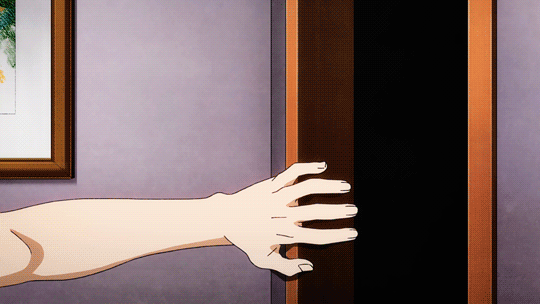
Haha, no, I actually prettied it up 1/5/21. Yes, I’m glorious.

No I’m actually Dio DIO in this situation, who am I kidding.
(This transition from Caesar to Dio fascinates me, by the way.) (The GIF.)
The JOJO reference is because I’ve finally finished Diamond is Unbreakable! It was fun! I enjoyed it a lot! Ready for the next part!
But back to Banana Fish.
Hope you enjoy this!
So my plans failed again. Who is surprised? (Not me.)
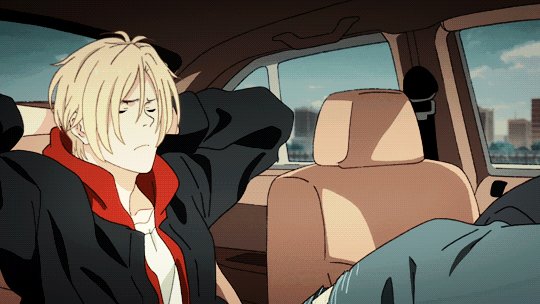
I apologize profusely for the gaping void of Banana Fish-ness left since last I posted.
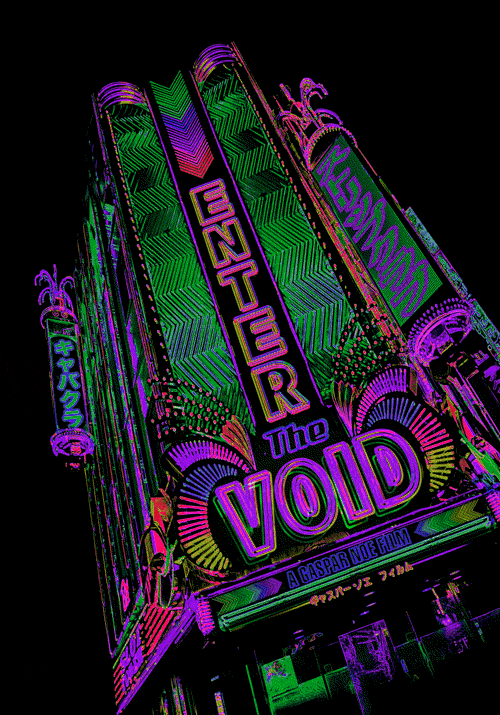
No really. I now have an alarm set for every Wednesday.
Let’s see how this goes. News Update: Maybe next time.
Also, my internet is still blitzy & rotten, otherwise I would’ve posted this yesterday (the 15th).
Now on to the in-depth, delighted gushing - er, review, of Banana Fish!
*Also, this is part 4, and 4 is a special number for me. Because of this guy:
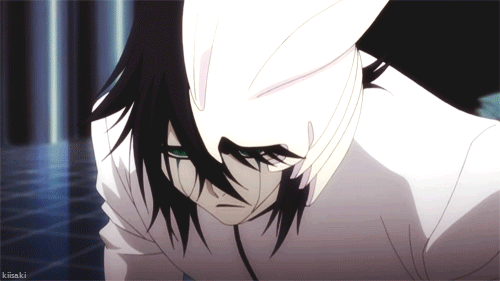
And I can spell his name correctly!!! (It’s Ulquiorra, from Bleach, my 1st anime fan gushing love.)
Yes, I’m strange. Moving on.
So, brief recap, since I’m not sure anyone has read Part 3, given how terrifyingly long it is. If you missed it, here’s the link:
https://imagine-fight-write.tumblr.com/post/632014616404344832/random-banana-fish-review-vol-1-part-3-my
Please love & like it & repost to the rest of the Web. I worked tremendously hard on it.
Yes it’s long, but oh, it was delightful! There was snark! Delicious food! Wine! Fabulous mustaches! Mysteries! I gushed so much!

(And snarled at the wonton waste of good breakfast food, which I will not forget & always condemn.)
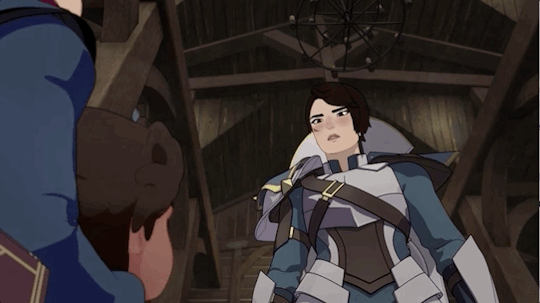
*I mean, I know people who will throw up if they have breakfast in the morning. But it’s important to eat so you have energy to do things & feel good.
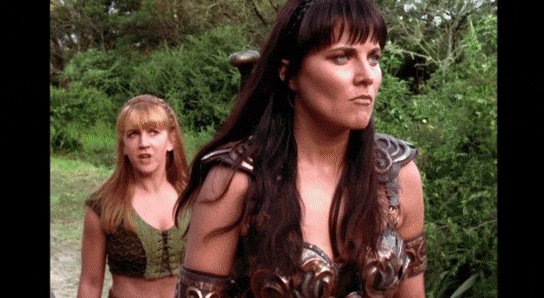
And Dino took a perfectly beautiful breakfast & essentially wasted it for no good reason. I was so mad.
We meet Dino Golzine, a.k.a., Ash’s worst nemesis /enemy (note, I can’t spell nemesis) and major reason for why his life sucks.
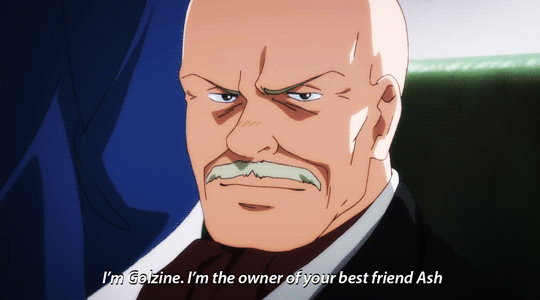
(Although society doesn’t help either. Though the police try. They really do. Except what’s his face who’s complete scum & thoughtless, but we won’t meet him til Vol. 2. Plus I don’t think he has a name?)
But yes, Dino Golzine. All around awful person, and not safe around children (or anyone, really.) He’s low-key in this scene, mostly using verbal assaults (to great effect) but just you wait. There’s a reason he’s a mob boss.
Ash snarks, to great effect, but he’s no match. Dino has all the cards and all the dice (cards & dice being metaphors for power, & how he involves awful, painful memories of Ash’s past & tries to manipulate & order him around. Brrr.)
But Ash rallies, and ultimately refuses returning to be Dino’s heir / toy.
We meet Shorter! Huzzah!
(End of recap.)
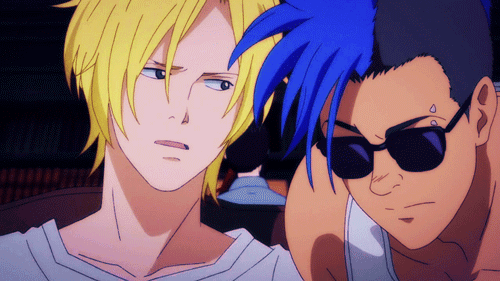
It’s clear right away Shorter & Ash are old friends. They exchange quips about Marvin. We learn Marvin holds a mean grudge, so savvy readers can guess it’ll come to play later (it does.)
Shorter’s last line is strange.
“Just don’t put me in the position of having to kill you.”

Which is kinda out of the blue. I don’t know what to make of it. It doesn’t spoil or fore-shadow anything (unless in a very confused, round-about way) because that never happens later. So I’m confused.
Ash laughs it off and goes zooming off on his motor-bike / motorcycle (not sure which).
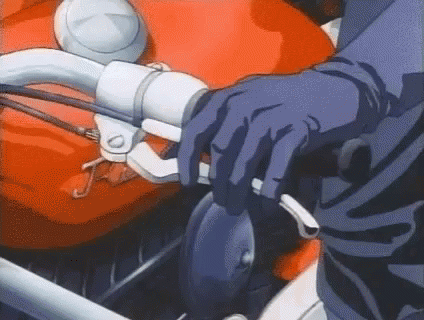
Note, from this short scene we already learn Shorter has his own sources of information - he knows Ash went to Dino’s, fast enough to be there before their conversation ended (unless he was just lucky to be there already - why was he there?). He already knows about Ash’s talk with Marvin, with enough detail to warn Ash about Marvin’s temper & that Marvin likes him, which is a bad combination.

Shorter is smart & cares about his friends, warning Ash about Marvin.
Aren’t friends great?
Especially after meeting such a dominating if soft spoken monster like Dino?
The answer is yes.
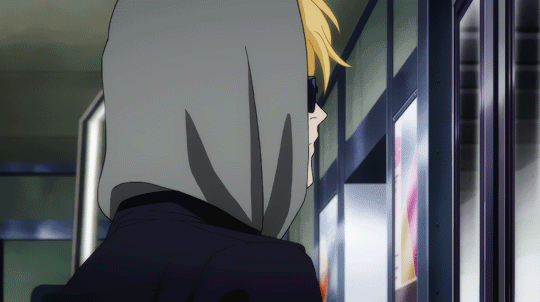
Next, we get this hilariously great shot of Ash running up the steps to his dingy apartment (pg. 47.)
It’s reminiscent for me of a scene in JoJo’s Bizarre Adventure, Part 1, when Jonathan & Dino have their epic fight in the Joestar mansion.
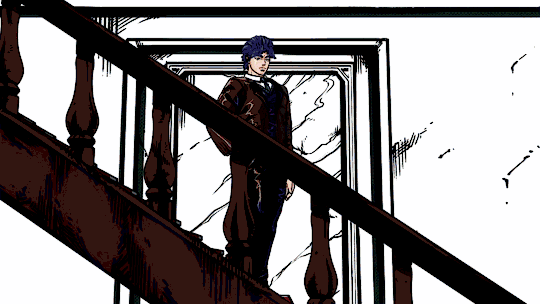
There’s a part where Jonathan does this epic flip up to a second floor via sword (it’s epic) & it ends with this a few-seconds-longer-than it-needs-to-be shot of his butt. You can’t miss it. I’m usually oblivious to such things & I noticed it. I laugh every single time.
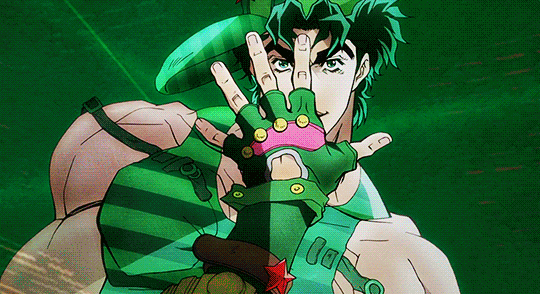
Anyway, back to Banana Fish.
(The atmosphere of grunginess (it’s not a word, I meant dirty, ugly, rough) & spartan furniture is great. Just look at those walls. I adore it.
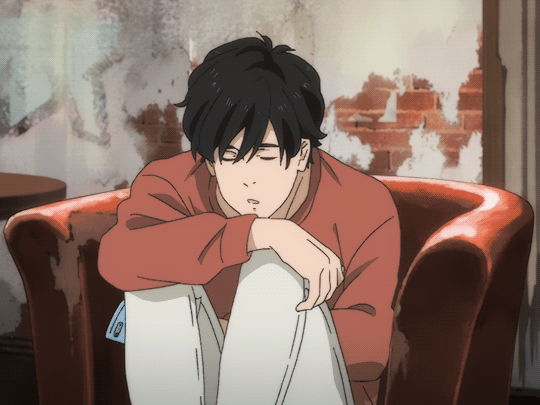
(But would never want to live there.) Ash is clearly not rich & after Dino’s rich mansion, this is a stark contrast.
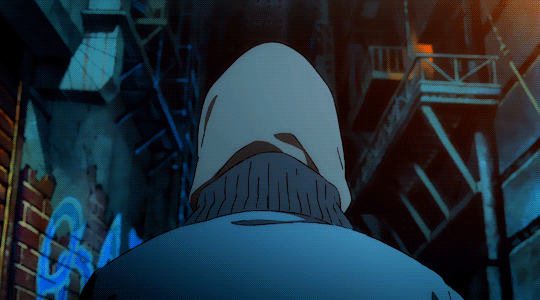
Also, there are no pictures or posters on the walls (which are festooned with dirt and cracks instead.) In fact, there’s almost nothing in terms of personal effects at all.
This baffles me. I mean yes, I assume they’re all dirt poor, living in a gang & working for the mafia on the side isn’t something you do for the luxuries. But surely they’d have something.
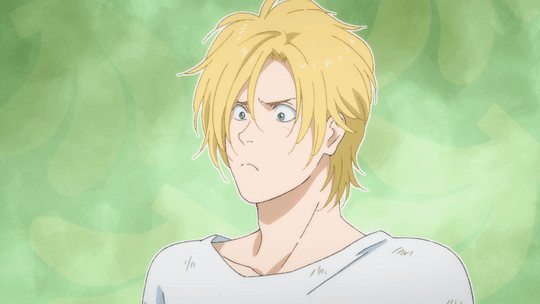
Or maybe it has something to do with Japanese decorating aesthetics? Meaning, Japanese appear to be more spartan than Americans in terms of decor (see the book, In Praise of Shadows, for example.)
* I can’t spell aesthetics. Why do I even use that word?
The apartment just looks extremely bare compared to others I’ve seen in movies depicting this era. Is what I’m saying.
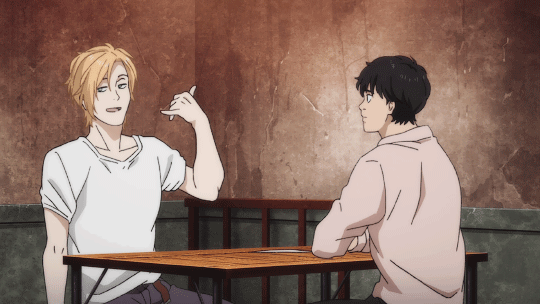
Look at those bare walls. (It hurts me.)
Thoughts? Comments on how Japanese, Americans, and Europeans differ in basic decorating styles? Comment below!
Also remember as always, Banana Fish is both set & was written in the 1980’s, well before the “modern” style we have now.
Unless - wait. There is something very important to Ash which he’s clearly hiding in the apartment he goes to, which I assume only Skip & select members know about.
So maybe this isn’t actually Ash’s main base, where he sleeps & hangs out?
Yes, that must be it.
If you’re confused, I’ll explain once we get done with this section.
Moving on.
We meet Skip!!!! (Pg.47)

Black characters (and Latino) are still, alas, extremely rare in manga, anime, & other media, so all the cheers for including Skip so early & as such an important character.
Because Skip is very important. For multiple reasons. More on that later. Also note, 1 of the gang members Ash busts earlier is also black.
Again, the dialogue is great here between Ash & Skip, establishing Ash’s trust in him. Which is no small thing.
Skip is like Shorter, (agh, both their names start with S) sweet, but also has a nose for news.
Arthur’s going to get it, hah!
There’s yet another reference to it being early.
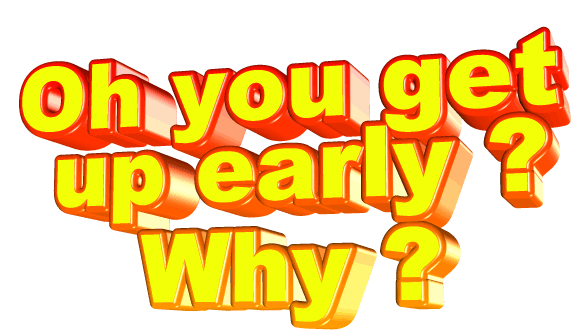
Though there’s no specific time mentioned . . . Nope, not since Ash found the poor, dying banana fish dude.
Does Ash usually sleep in? Is he a night owl? He was wandering around at 1 in the morning last night, after all.
*Yes, technically it was early morning, but it was still dark, so bite me.
But then, he was also suspicious & keeping tabs on his 2 gang members. So, who knows.
But I’m going to guess he’s a night owl.
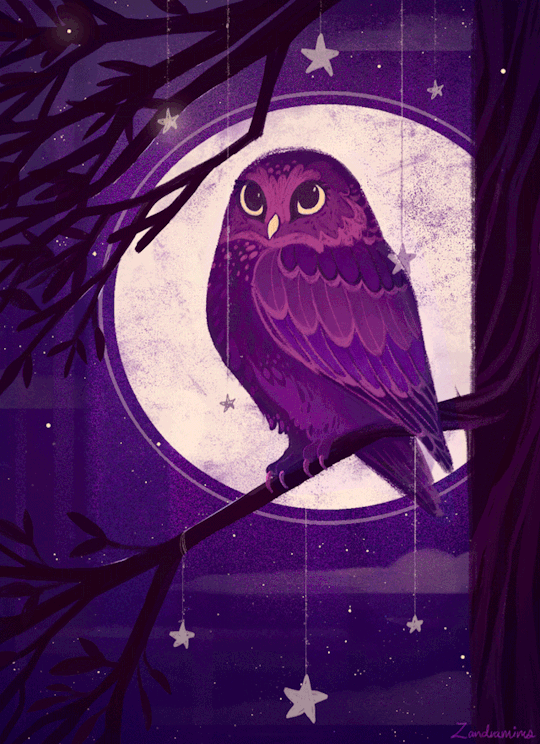
Ash sits on the bed, and after Skip mentions everything is good, “him, too”.
Ash gives his 1st real, genuine smile. Gentle, relieved, no hard edges. Just pure happiness & relief. It’s sweet.
(Also, I just realized the “him, too” is supposed to be a surprise / shock for the reader & I spoiled it earlier. I do apologize.)
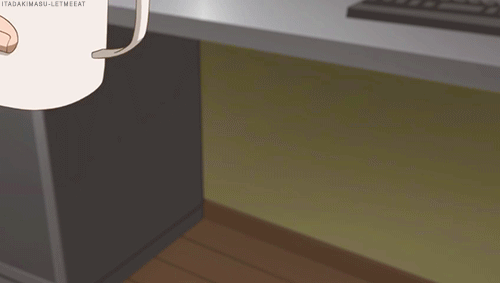
Skip offers to get coffee but Ash declines, deciding to nap, which reminds me:
Actually, drinking coffee before you take a nap can, for some people, actually make you sleep better.
Also, short cat naps (15-30mins) can boost your energy and mood.
Naps are good for you!

I almost wondered if the comics Skip had on the table might’ve been manga, but remembered it was the 1980’s and, far as I know, manga wasn’t big the U.S. yet. Alas!
Which is funny if you think about this being in a manga.

Skip goes to leave. Ash puts his hand in his pocket and gets this intense, almost fierce expression on his face (middle panel, pg. 48).
I was absolutely baffled by this reaction for a long time, but finally figured it out. Ash’s reaction is supposed to be baffling, because what he realizes right here will be revealed in the next few pages.
Skip, concerned, asks what’s up, but Ash brushes him off and sends him off to buy coffee. (After which I sincerely hope he takes a nap, because he needs one, he’s been up all night.) Sleep is good for you!
Skip is able to buy coffee with a single coin. A single coin.
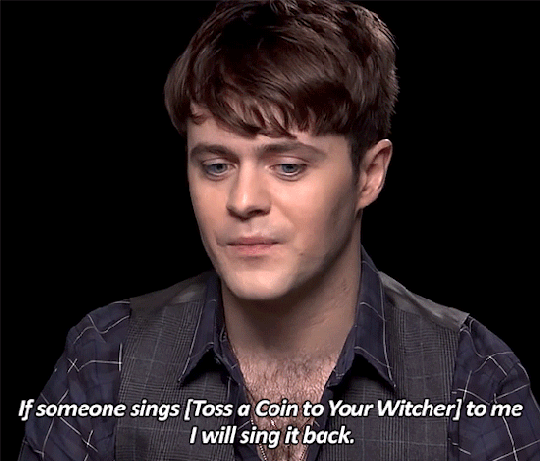
(Sorry, I couldn’t resist.)
All my tears, and curses on inflation and overpriced coffee! And Starbucks!
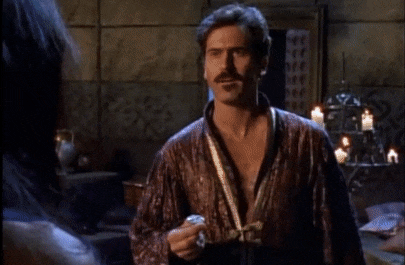
Anyway, we learn Arthur’s going to get it (and Skip is the best spy ever) and the scene cuts to:
Our favorite person (not) Dino Golzine, tending his orchids.

I like this. It’s a rather unique hobby for a villian. I assume to give him a refined, elegant, and exact air.
He’s interrupted by Angie & his fabulous mustache (snickers) and this delightfully comic scientist person (who might be important later? The face sameness makes it difficult to judge, & I’m too lazy to consult my other volumes, which are not close by.)
But his entrance is priceless (pg. 50). I mean seriously, please go find it if you haven’t already. It’s dramatic, with a big WHAM! & he looks so cartoonish.
I love it.
Dino tells him, essentially, “don’t disturb my orchids” and me being an non-gardner person, I wonder: is it actually true loud noises can disturb flowers?

Comment below!
Anyway, Dino quickly establishes yes, he did send Ash’s gang members to kill the poor banana fish guy who started this whole mystery, and yes, it was important.
There’s a great panel (pg. 51) of scientist dude, drawn much less comedic, the whole panel black except for a white aura around him sweating and clearly in distress.
He whispers, “It - it’s gone.”
Dino snaps to attention with a leonine look, exactly like a cat who has just spotted another cat. It’s easily my favorite picture of Dino so far, very striking.
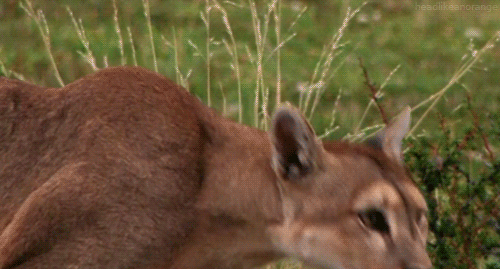
The dialogue is brilliant and snappy, short and direct.
“What is gone? . . . You’re positive? . . . Just a small amount.”
And we get the grand reveal:
Ash, taking out a bullet shaped capsule (was the shape intentional by Yoshida?). A capsule he’d clearly taken from the dying banana fish guy. There’s a great panel on the bottom of pg. 52 of Ash’s questioning expression and a ?
He unscrews the capsule and pulls out a tiny vial.
Thinks of the address the dying banana fish guy gave him.
Ash goes into the next room, where we see the silhouette of someone sitting with a plaid blanket draped across their knees.
He expresses his first real look of vulnerability, and gives a wonderful line:
“Go see . . . Banana fish . . . He said it and died. And you say it and you might as well be dead. Who did this to you? Griff . . . Please tell me, big brother.”
Everything clicks together (almost.)
Griff /Griffin is the soldier shown way back in the very beginning. The one who left for a few minutes and came back insane and shot up his squad.
Who’s now a human vegetable.
Banana fish is clearly responsible. Somehow.
And Dino is mixed in with it (of course). Pieces are coming together, but questions still remain.
Until next time!
#random#banana fish#banana fish review#manga#ash lynx#skip#banana fish shorter#friendship#xena warrior princess#JoJo's Bizarre Adventure
7 notes
·
View notes
Text
We fought in an immoral war that wasn't ours for rights we didn't have.
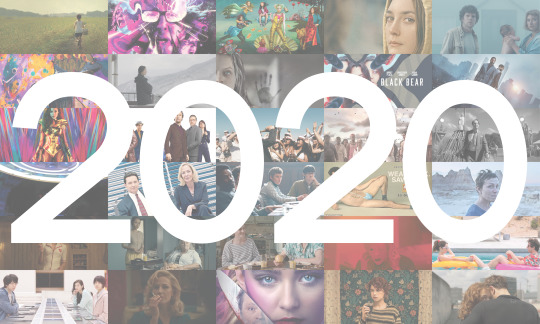
I’ve been trying to write the blog post for 4 months but haven’t been struggling to find the motivation after a terrifying 2020 that’s drained me of the will to do much of anything. So far, 2021 has been much of the same, except it seems like the solidarity that my community shared in 2020 has given way to frustration and defiance. Social distancing and community safety seem to be the furtherest thing from many people’s minds all while our COVID cases are constantly breaking single-day records. While the hope that we’ll soon be out of this is bright, the accumulating darkness and death we’re experiencing right now really nails home how trivial it is to be watching and writing about movies.
Normally, watching a good movie is one of the best ways to escape the banality of everyday life, but without theatres, the movie-going experience is inextricably tied to the banality of being locked down in your own home. For that reason, a number of the movies that I would have enjoyed seeing in the theatre, or even with home viewing in a different context, didn’t resonate with me. Films like Nomadland, which has received unanimous acclaim, or I’m Thinking of Ending Things, which is totally in my wheelhouse, didn’t resonate with me.
Originally I excused my lateness in writing this post as an opportunity to catch up on 2020 releases that I hadn’t gotten around to (like Minari or Ma Rainey’s Black Bottom), but with April almost over, I still haven’t been able to find the energy to watch them. Instead, I’ve been watching mostly 90′s junk thrillers or pure escapist action movies. Quickly realizing that I probably wasn’t going to get around to the rest of my 2020 watchlist anytime soon, I set the Oscars as my next goal. If I missed that deadline, then nothing was going to get me motivated to write this (I’m actually just finishing it up after a break to watch the Oscars).
Every year I put together a collage image of 30 films that make up my short list. Normally finding the last couple of films to fill it out to 30 is a struggle as is narrowing down the list to the top 10. Oddly, this year, there was no shortage of films for my short list, but I had a hell of a time finding enough of them that I wanted to put in the top 10. So a couple of films that might not have made it in past years have popped into the top 10 because I actually got to see them in theatres (you’ll know when you see them).
10. The Trial of the Chicago 7
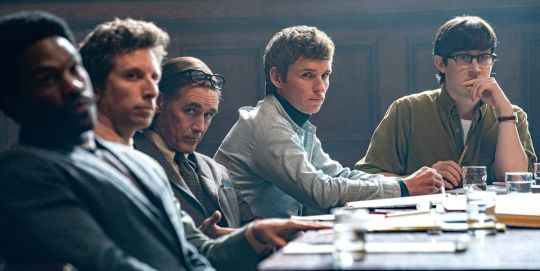
Aaron Sorkin’s sophomore directorial effort was one of the biggest films to be sold to streaming because of the theatre shutdown. Featuring a stacked cast and the typical Sorkin pacing and dialogue, The Trial of the Chicago 7 is an actors showcase, with Yahya Abdul-Mateen II and Mark Rylance standing out.
9. Never Rarely Sometimes Always
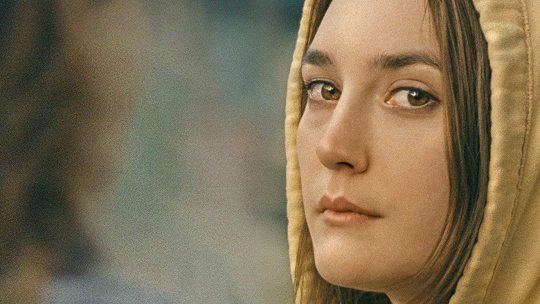
Never Rarely Sometimes Always is a hard film to describe. It’s essentially a road movie about the difficulty of having an abortion as a minor. The film’s mood is played sullenly for the most part, so when the emotion breaks through in the second act during the questionnaire that the film takes its name from, the impact it has is immeasurable.
8. The Invisible Man

The Invisible Man was the last movie I saw in theatres before theatres were shut down. Being the only movie on this list from the “before times” probably endears me to it, but nevertheless it was a solidly crafted film. It’s brutal, mean, and scary in a way that horror thrillers too often fail to be. Director Leigh Whannel had a really solid debut with 2018′s Upgrade and proves that wasn’t a fluke with a worthy followup.
7. Tenet

A new Christopher Nolan movie will always be an event for me. As one of the only blockbuster auteurs, his movies are spectacular and uncompromising at the same time. Tenet came out in theatres at a time where COVID seemed to be under control in Vancouver, allowing me a chance to see it twice on the big screen. My first screening was in IMAX and was rife with the sound problems that made the dialogue unintelligible. However, my second viewing at a different theatre had no such issues, allowing me to fully appreciate the intricate plot.
Tenet is a much more stylized Nolan film, with the whole thing feeling like a riff on a Bond movie. Despite some of the heavy-handed dialogue (”including my son!”), awkward backwards walking, and underwhelming final set piece, Tenet was the biggest event film of 2020 and was one that I’ll be glad to revisit.
6. Bacurau

Bacurau is a modern day Western set in a fictional town in Brazil that I went into knowing nothing about beforehand, which is the best way to see it. All I’ll say is that Udo Kier comes to town and things get weird. Bacurau made me feel horrified, uncomfortable, and celebratory at different times.
5. Palm Springs

Palm Springs follows the surprisingly growing trend of Groundhog Day style time loop movies. While Happy Death Day and Edge of Tomorrow apply it to another genre, Palm Springs stays firmly within the romantic comedy genre of its predecessor and provides a goofy yet sentimental story. The timing of Palm Springs’ release couldn’t be more appropriate, as it unintentionally depicts what being in lockdown feels like while simultaneously providing a lighthearted break from it.
4. Undine
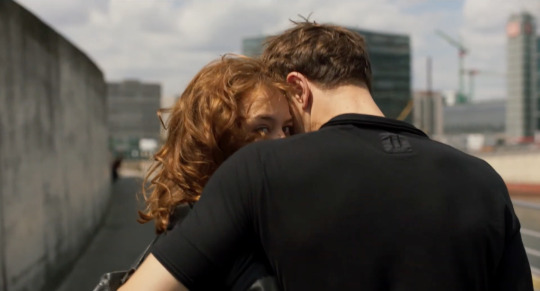
As one of the films I watched as part of VIFF’s at home event, Undine was the most compelling of the dozen I watched. It’s a film about jilted lovers, underwater welders, and mermaids that threads the line between romantic drama and fairytale expertly.
3. Da 5 Bloods

Da 5 Bloods is the latest in Spike Lee’s exploration of being black in America throughout different periods of time. Like with BlackkKlansmen, Lee crosscuts real life footage from present day to nail down the connection between the treatment of black people in the United States in the present and the past. While the film is a little shaggy and shifts tone and genre, it’s incredibly compelling and features the best performance of the year in Delroy Lindo’s Paul.
2. Possessor
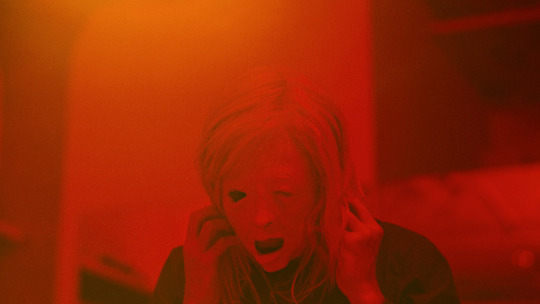
Brandon Cronenberg’s Possessor has all of the body horror of his father’s early work with a meanness that feels appropriate for such a shitty year. The film looked great and featured a great lead performance from Andrea Riseborough who, between this and Mandy, seems to be the new star of weird horror.
1. Another Round

As much as I love Mads Mikkelsen’s Hollywood work, he’s on a whole other level in his Danish work. In Another Round, he plays a jaded school teacher who starts to appreciate life once he and his friends start maintaining a constant blood alcohol level. It’s funny, tragic, and powerful and the best movie I saw in 2020.
Honourable Mentions
As I mentioned earlier, I had a hard time filling the top 10, so I don’t really have any honourable mentions. However, Mank was originally in there before I actually started to write the list.
2021
Dune, No Time to Die, and Last Night in Soho are holdovers from last year that I’m still dying to see in theatres. Other than that, I’m not super excited about much, as I don’t want to look forward to a movie only to have it delayed or released on a streaming platform.
At this point I’m more looking forward to a post-COVID world and being able to watch movies in theatres again. I don’t care what the film is, I’ll watch it.
2 notes
·
View notes
Text
The Falcon and the Winter Soldier Episode 2: Marvel and MCU Easter Eggs Guide
https://ift.tt/eA8V8J
This article contains The Falcon and the Winter Soldier spoilers.
Marvel’s The Falcon and the Winter Soldier episode 2 is much less of a slow burn than the first episode. Not only do we actually get Sam Wilson and Bucky Barnes sharing screen time together, and a better understanding of what new Captain America John Walker is all about, but we get a host of new Marvel Comics characters introduced to the MCU!
There’s a lot going on in this episode, so let’s start digging in to all the Marvel goodness to be found…
The Star-Spangled Man
The title of the episode is of course a reference to Steve Rogers’ tenure as a piece of propaganda in Captain America: The First Avenger, when he was sent out to convince people to buy war bonds. That excellent MCU film featured an era-appropriate song called “The Star-Spangled Man” with music by Alan Menken and lyrics by David Zippel. When the new Captain America runs onto the football field for his Good Morning America appearance, we have an updated version of the very song being played by the high school marching band.
Similarly, that quick montage of John signing Captain America merchandise is somewhat reminiscent of the “Star-Spangled Man” sequence in The First Avenger, which showed Steve shaking hands, signing autographs, as well as all the 1940s Cap merch that was being produced at the time.
John Walker
John’s origin is so much better here than in the comics, where he was a reactionary almost supervillain called Super Patriot before taking on the Captain America job. Still, despite his early comics history, Walker took the Cap job as seriously and sincerely as the one we see here on The Falcon and the Winter Soldier, and MCU John seems even more sympathetic than Marvel Comics John.
Walker using his shield to cushion Battlestar’s fall from the truck is a pretty classic comic book style Captain America maneuver.
Custer’s Grove, Georgia is a fictional town in Marvel Comics, and that’s indeed where the John Walker of the comics came from. To talk more about this here might get into potential spoilers for future episodes (no, we haven’t seen them either), so for now, let’s just say this is a nice nod to John’s comics history.
John’s wife, Olivia Walker (played by Gabrielle Byndloss) is a new creation for the MCU, and as far as we can tell, she doesn’t have a Marvel Comics counterpart.
John Walker mentions that he’s “been a captain before,” and that probably refers to both his military service
Isaiah Bradley
Co-created by Axel Alonso, Robert Morales, and Kyle Baker, Isaiah Bradley was introduced in 2003’s Truth: Red, White, & Black. In the miniseries, Steve Rogers discovered that after his own creation, other scientists tried to replicate the super soldier serum and experimented on Black soldiers. The lone survivor of this was Bradley, who donned a Captain America outfit and fought Nazis against orders. Like his MCU counterpart, he was punished and thrown in prison for years. Eventually, he was pardoned and spent his days living in obscurity, only known as a legend by the Black community.
On the show, Bradley is depicted as being the secret Captain America of the 1950s. This is likely to be the closest reference we’ll get to William Burnside, yet another replacement Captain America. Back in the ‘50s, Captain America comics continued to exist, but were a little too knee-deep in being anti-communist propoganda. When Marvel reintroduced Captain America in the 1960s as a member of the Avengers and introduced the plot point that Steve had been frozen during World War II, it essentially negated his 1950s adventures.
Down the line, they explained that those comics were in continuity, but the Cap and Bucky in them were impersonators who had undergone plastic surgery and underwent incomplete versions of the super soldier experiment. This drove them to insanity and the comics were explained as them being paranoid and seeing communists everywhere. The two were put on ice for a while, but were eventually thawed out to fight the real Captain America and Falcon. While Burnside later became the villainous Grand Director, the fake Bucky went on to become a hero named Nomad.
Eli Bradley
The teenager with Isaiah is Elijah Bradley. Introduced in 2005’s Young Avengers, Eli is Isaiah’s grandson. When the Avengers ceased to exist, Eli became the leader of the Young Avengers under the name Patriot. He insisted that he had super soldier serum in his blood, but was secretly just using Mutant Growth Hormone to get by. Eventually, his grandfather gave him a blood transfusion, making his super soldier claims legit.
Eli is just one of the many Young Avengers characters popping up in the MCU recently (including Billy and Tommy on WandaVision, and Kate Bishop’s upcoming introduction on Hawkeye), suggesting a possible incarnation of the tea is coming to the MCU down the line.
Battlestar
Introduced in Captain America #323, Lemar Hoskins is yet another character pulled out of Mark Gruenwald’s legendary run. Hoskins was originally a professional wrestler who was granted super strength from the Power Broker (more on him in a minute). When John Walker took over as Captain America, Hoskins first became the new Bucky before ditching the name in favor of Battlestar. After the storyline of Walker as Cap ran its course, Battlestar has remained a minor patriotic vigilante in the Marvel universe, showing up here and there through the years.
“Black Falcon”
The kid in Baltimore who greets Sam Wilson as “Black Falcon” seems like a fun nod to the fact that when Black superheroes were first becoming a thing in comics, they were often identified as such with their names (Black Panther, Black Lightning, Black Vulcan, etc). Sam was never known as “Black Falcon” but given the era he was created in, things probably could have gone that way. See also, Sam joking with Bucky about being “White Panther.” (Of course, Bucky’s “White Wolf” moniker was first heard in the post-credits scene of Black Panther).
The Power Broker
Robert Moses was the racist bastard who built most of New York City between the Depression and the 1960s…hang on…different Power Broker.
Curtiss Jackson was originally a Machine Man villain, created by Roger Stern and Sal Buscema in the late 1970s before he was picked up for the legendary Gruenwald run of Captain America. There, he ran a corporation that used super science from Dr. Karl Malus to give superstrength to people for a price. That price: indentured servitude in Jackson’s pro wrestling promotion.
Among the people given super strength through the Power Broker’s program: Dennis Dunphy, the legendary D-Man; Sharon Ventura, the second Ms. Marvel (and eventually the second Thing); as well as both John Walker and Lemar Hoskins themselves. Jackson was eventually attacked by the Scourge of the Underworld, a Punisher-like vigilante, and forced to give himself his own super strength treatment, which caused him to become a deformed giant.
The Power Broker of the MCU is definitely tracking in some kind of bootleg super soldier technology, and that seems to be where the Flag-Smashers have gotten their augmented abilities.
The Hobbit
The Hobbit was indeed originally published in 1937, but wasn’t published in the U.S. until 1938. So either Bucky was a really voracious reader who ordered stuff from abroad, or his memory is a little faulty…unless James Buchanan Barnes was already running secret missions in Europe long before the United States entered World War II?
Miscellaneous Notes
We get Bucky’s therapist’s first name here, she’s Dr. Christina Raynor. Still not finding any Marvel Comics parallels here, but we’re keeping our eyes open.
cnx.cmd.push(function() { cnx({ playerId: "106e33c0-3911-473c-b599-b1426db57530", }).render("0270c398a82f44f49c23c16122516796"); });
The shot of the two pairs in the truck staring each other out seems like a homage to every tv episode where a duo meet alternate dimension versions of themselves, and aren’t impressed.
Spot anything we missed? Let us know in the comments!
The post The Falcon and the Winter Soldier Episode 2: Marvel and MCU Easter Eggs Guide appeared first on Den of Geek.
from Den of Geek https://ift.tt/3cqentM
2 notes
·
View notes
Photo

Author: froggedstitches
Prompt: Positions; every day the same.
Group: B
-
The Liberation of Change
No matter how life changed for everyone else, it seemed every day was the same for Belle. The sameness wore on her. She was so tired. No matter what she did, how she rested, she felt an exhaustion settling into her bones.
Though it was mainly for the comfort, she sat with one of the penny serials that Mr. Gold left for her open on her lap. Even her favorite books had somehow lost their excitement. She had not seen a face that didn’t belong to her husband or the staff in weeks, and neither would provide her with conversation. Gaston because he was Gaston. The staff because it turned out that her husband had given them instructions to interact with her in only the most professional of ways. God, she missed the staff from her father’s house.
Frustrated with the four walls of her bedroom, she hit upon the idea to go down to the morning room. Perhaps light and green things would perk her soul up a bit. Rolling up the serial, she tucked it into her pocket.
Belle ran her fingers through the fern just inside the morning room door before going over to the settee. Her hand rested on her skirts, fingers curled over the uncoiling penny serial hidden inside, and she conjured memories of her childhood.
Mr. Gold had been a common visitor to her father’s estate, the expansive and beautiful grounds at the time providing him with almost inexhaustible backgrounds to incorporate into his paintings. He was known as terribly temperamental and unsociable, but Nathaniel Gold had never been anything save gentle and kind to her. She had the fondest memories of following him around as a child, watching with rapt attention while he sketched out plans. If she concentrated hard enough, she could feel the joy of standing quietly beside him with her hands laced together behind her back while she watched him paint.
For a moment, she truly thought his voice was a part of her daydream. She shook off memory enough to convince herself that Mr. Gold was indeed there, as though wishing had brought it to pass.
It didn’t sit well with her that she had to essentially sneak across to the parlor. Belle loathed being relegated to listening at doorways, but her husband dealt her no small amount of misery after she joined the conversation during Mr. Gold’s last visit. She didn’t want to repeat it just yet.
Gaston made the indecisive groaning sound that so badly got on her nerves. “I’m in the midst of a critique. Traipsing out to the countryside right now-”
A stay in the country! And her husband had a mind to reject the invitation. Belle had to consciously restrain herself from stamping her foot.
“Mrs. Drake asked that I extend an informal invitation specifically to your and your wife,” Mr. Gold cut in.
“Specifically?” her husband replied after a moment.
“By name,” Mr. Gold confirmed. “She intends to remain for a fortnight, at least, to take in the country air. You and your wife have been asked to remain as long as you wish.”
Gaston wasn’t enthused about the invitation until he heard that Mrs. Drake - Mr. Gold’s primary patron - would be there, as well. He had been trying to wheedle her into patroning him for years. When her husband agreed for them both to join the retreat, her stomach flipped with the thrill of it.
She enjoyed long carriage rides. A good thing, that. The ride from the LeGume estate to the Drake country house took the entire morning.
New scenery, the prospect of conversing with people, not being as taken for granted as a piece of furniture - it was difficult to stem her excitement. Belle felt something akin to alive for the first time in months.
When they’d had time to recover from travel, Mrs. Drake’s cook had luncheon prepared. Food that didn’t turn to ashes on her tongue! Gaston and Mr. Gold borderline squabbled their opinions back and forth, while she could have composed an ode to the veal cutlets.
“Mr. LeGume,” their host began. “I have it at trustworthy rumor that your current project concentrates upon the Neoclassical.”
“A work well under progress,” he said proudly, puffing up.
“I wonder… My second husband left me with an Ingres that I believe the public has seen very little of. Would you care to have a look? Perhaps it might add some intrigue to your new volume,” she suggested.
“I would!” Gaston practically shouted, never one to hold back, himself.
Mrs. Drake gave a nod of satisfaction. “Let me show you. You are all welcome to view, if you like.”
She led them through a short hallway and into a room filled with art. Mrs. Drake showed her small party down to a large nude of a woman who could have been made of marble, for all the human detail left out of her flesh. It was her husband’s preferred style for depicting feminine subjects.
Belle stepped away, determined that she would enjoy more apart from him. After a little while left alone, a soft clearing of throat came from behind her. She found Mr. Gold stood near.
“If you don’t find yourself too travel wearied, I wondered if you would mind posing for me?” he asked quietly, a hopeful smile tilting one side of his mouth.
Belle looked to her husband. The very idea of posing for Mr. Gold made her happier than anything she could remember.
“I would,” she told him. “Very much so. Pardon me?”
She loathed asking permission, but if she didn’t, Gaston was liable to have a tantrum later. She went to him where he stood with Mrs. Drake.
“Gaston,” she said to gain his attention. He didn’t look. “I’ve been invited to pose for Mr. Gold.”
With an irritated expression shot over his shoulder, he snapped at her. “Go on with you, then. Can’t you see I’m busy?”
Mrs. Drake gave him a bit of a funny look. “I believe I might go along. I could use a bit of outdoors.”
Turning, Belle found Mr. Gold looking on, and she gave him a nod that was perhaps more excited than she should have allowed.
There was a small waterfall on the property, Mr. Gold explained, that he wished to inspire the background for his first painting of the series. He carried his easel and Belle carried the box with his supplies, and a houseman followed carrying his canvas and stool. Mrs. Drake walked a short way behind, with a maid carrying her blanket and needlework basket. Their short journey again invoked memories of following him around her father’s estate.
Mr. Gold was quick to arrange his working set-up. “Will you stand there? Not too near the bank, but in front of the falls?”
Plucking a pencil from among his paintbrushes, he began to sketch right onto the canvas. Belle placed herself where he requested. When Mr. Gold’s eyes were on her, she didn’t feel disgusting as she did when her husband looked at her.
“Am I to be Medusa?” she inquired, grinning.
He gave her a look of teasing doubt. “And here I figured upon Sphinx.”
“I’m not that mysterious, Mr. Gold.”
“I might disagree. However, this painting is to be of Echidna.”
“I quite like that,” Belle said with a nod. “Lady monster, mother of monsters.”
Mr. Gold’s attention lingered on her. “Lift your hands, please?”
She did, but he shook his head, so she raised them higher.
“Open your fingers,” he told her. “Wider arms, as if you were embracing a great pillar.”
Belle tried her best, but had she known what he would do, she might have failed more quickly. He took his cane and left his canvas to approach her. Lifting his hand, he stopped before it met her own.
“May I?” he asked, and she nodded.
His warm hand braced the back of hers. He brought her hand higher, opening her arms more widely.
“There you go, just so,” Mr. Gold said.
Belle felt his breath on her cheek. The afternoon sun caught in the slivers of gray in his hair, and when he looked at her, his eyes were honey-amber rather than the near black they seemed in dimmer light. the urge to kiss him prickled behind her breastbone.
She could, she thought, looking to Mrs. Drake, who had already fallen asleep sitting against the silver birch nearby. The maid and houseman were down the stream a ways. She could so easily have closed the small space between herself and Mr. Gold for a kiss.
“Are we on to posing already?” Mrs. Drake asked, apparently not as asleep as she appeared.
Mr. Gold startled as though he woke, himself. With a look of apology that Belle felt unnecessary and a brief stumble on a root in the grass, he returned to his canvas.
32 notes
·
View notes
Text
What I Saw on Mulberry Street
At first, I was slightly amused by the whole brouhaha that followed the announcement last week by the estate of Theodor Geisel, a.k.a. Dr. Seuss, that it would stop republishing and selling six of the famous author’s books, including such classics as And To Think That I Saw It On Mulberry Street, If I Ran the Zoo, On Beyond Zebra, and McElligot’s Pool. I know all these books; they were classics of children’s literature so long ago that I remember reading them when I actually was a child and enjoying them immensely. We all did. Dr. Seuss was part of the children’s canon back then: read by all, touted endlessly by librarians and teachers, and considered controversial—as far as I recall—by none. Just the opposite, actually: if there was one children’s author from back then whose whimsy was deemed charming and fully acceptable, it would certainly have been Dr. Seuss.
But times have changed. And there is no question that illustrations in all the books in question feature caricatures of various minority groups, particularly Asians (depicted with slanty lines for eyes, pigtails, and conical coolie-style hats) and Black people (shown shirtless, shoeless, and wearing grass skirts). On the other hand, Dr. Seuss himself was a powerful enemy of fascism who published more than 400 wartime cartoons savaging Hitler, Mussolini, and the Japanese leadership. And some of his books were thinly veiled anti-fascist parables: it is widely understood, for example, that Yertle the Turtle (1958) was meant as a direct attack on fascism (apparently dictatorial Yertle originally sported a Hitler-style moustache) and that Horton Hears a Who (1954) was meant as a kind of encouraging parable about the American occupation of Japan. More to the point for Jewish readers is that The Sneetches (1961), a book that the estate will continue to publish, is a focused, double-barreled attack on racism and anti-Semitism and was understood that way from the time it was published. Nor was this imputed meaning—the author himself was widely quoted at the time as saying formally, that The Sneetches “was inspired by my opposition to anti-Semitism.”
So we are left with an interesting dilemma. Geisel, a life-long Lutheran who actually suffered a bit of anti-Semitic discrimination in college when he was mistaken by some bigoted classmates for a Jew, was a proud anti-fascist, a virulent opponent of racism and anti-Semitism, and a true American patriot. And he published some books that featured images which feel—at least by today’s standards—racist or at the very least inappropriate for books pitched at impressionable children. The managers of his estate solved their problem the easy way by deciding simply not to republish six of the man’s books, thus ending the controversy by eliminating the problem. An alternate approach, of course, would have been to re-edit the books, eliminate the offensive imagery, and bring out versions that feature the original text with illustrations tailored more precisely to suit modern sensitivity. And speaking specifically as a Jewish American, the fact that there aren’t any Stürmer-style caricatures of hook-nosed Jews holding huge bags of money in these books shouldn’t be a factor in our evaluation of the evidence: if anything, the thought of Black parents cringing when they come across racist caricatures of Africans should be more than resonant with Jewish parents able to imagine being in exactly the same position and feeling exactly the same level of hurt and outrage. And that brings me to the question that feels to me to be at the heart of the matter: should works deemed utterly non-offensive in their day be altered, either slightly or dramatically, to suit evolving standards with respect to race, religion, ethnicity, gender, etc.? It’s an interesting question, one that goes to the heart of the question of what literature actually is and what role it could or should play in society.
There are, of course, lots of examples of books that have been successfully revised to suit modern tastes. Agatha Christie’s book And Then There Were None was originally published in the U.K. as Ten Little Negroes (and the third word on the cover was specifically not “Negroes”). That was deemed offensive here, so the publisher just made up a different title. (The English publishers eventually did the same and brought the book out under the marginally less offensive title Ten Little Indians.) In Charlie and the Chocolate Factory, a favorite of my own children years ago, Roald Dahl originally depicted the Oompa-Loompas who worked in the factory as African pygmies and the depiction was basically of them as slaves and certainly not as dignified, salaried employees. A century earlier, Dickens himself was prevailed upon to tone down Fagan’s Jewishness in Oliver Twist, which he did by halfheartedly removing some of the references to Fagan’s ethnicity. Of course, when the author himself makes the revisions we are having an entirely different discussion: surely the actual authors of books should feel free make whatever changes they wish to their own work. The question is whether the world should “fix” published works to make them suit issues that were on no one’s radar, or hardly anyone’s radar, when the book was written and published.
Some readers will recall that one of my pandemic coping exercises last spring was embarking on a re-read of Mark Twain, a favorite author of my younger years. I was surprised how well many of his books stood the test of time, but I found myself most engaged of all by my re-read of Huckleberry Finn. Widely and entirely reasonably acclaimed as an American classic, the book is basically about the relationship of Huck and Jim, who is almost invariably referred to as Negro Jim. (Again, that’s not the word that appears in the book.) Of course, Mark Twain was writing about Missouri life in the 1830s and he himself was from Missouri and a child of that era. So he certainly knew how people spoke and I’m entirely sure that that word was in common use to reference Black people. Today, that word is anathema to all and is considered unusable in normal discourse, written or oral. But what about the book itself? Should it be “fixed” by having the dialogue altered specifically to reflect a dialect of English spoken in those days by no one at all? Or should the book itself be dropped from high school or even college reading lists as something too offensive to allow, let alone to require, young people to read? Huckleberry Finn is an interesting book for many different reasons, not least of all because Jim, a slave, is depicted sympathetically as a man of character, virtue, and strong moral values—a fact made all the more poignant by the fact that he is depicted as almost wholly uneducated. Indeed, Jim is a grown man with a wife and family, while Huck is a boy of thirteen or fourteen and the clear implication is that while the white world has failed utterly to make Huck into a decent adolescent, Black Jim, an uneducated slave, is quite able to bring him to the threshold of decency by showing him how to behave in an upright manner. So the book is hardly anti-Black. Just the opposite is far more true: in many ways, Jim, not Huck, is the hero of the book. And yet the constant use of that word is beyond jarring. Editions have been published for use in school that simply omit the word or change it. Is that a rational compromise? Or does that kind of bowdlerization deprive the book of its essential honesty, of its ability to depict a society as it truly was and not as moderns vaguely wish it had been? It’s not that easy to say.
When I was deeply involved in the research that led me to publish my translation of the Psalms, I became aware—slightly to my naïve amazement—of the existence of Christian editions of the Psalms from which all references to internecine strife, violent clashes between opposing groups in old Jerusalem, the corruption that led at least some poets to condemn the Temple priesthood, and the deep alienation from God with which at least some psalmists struggled—that the psalms depicting all of that challenging stuff had been nicely excised from the book so as to create a book of “nice” poems. (This parallels a Christian edition of the Old Testament I once saw from which the entire book of Leviticus had been omitted, presumably lest readers be offended by the notion that animal sacrifice and the safeguarding of ritual purity were essential elements of the covenant between God and Israel.) Those editions of the Psalms struck me as ridiculous and precisely because the resultant book was specifically nothing like the original work and gave a totally incorrect impression of the original work. But would one of the Dr. Seuss books under discussion really have been substantially altered by some of the drawings of black or Asian people replaced with more respectful images?
My feeling is that the Dr. Seuss affair is indicative of a larger issue in society. Obviously, changing a few drawings in a book is not such a big deal and is something that I’m sure happens without fanfare in the world of publishing all the time. But this specific issue seems to have struck such a chord with so many precisely because Dr. Seuss is deemed, not entirely incorrectly, as representative of a simpler world—by which term people generally mean one in which it wasn’t deemed necessary to care what smaller groups in society felt or thought. We’ve come a long way since then, and rightly so. The Seuss estate could certainly have felt justified in commissioning some new drawing to avoid going against modern feelings about ethnic or racial stereotyping. The books themselves would have been substantially the same. Once that line is crossed, however, and the book no longer is the same as it was—“fixing” the language in Huckleberry Finn, for example, or eliminating Shylock’s Jewishness from the play or Othello’s blackness—that is missing almost entirely the reason literature exists in the first place: to stir up emotion, to challenge readers’ preconceptions, and to educate—in the literal sense of the world: to draw the reader forward to a new level of understanding of the world of the author…and of the reader as well.

3 notes
·
View notes
Text
15 for ‘19: My Favorite Films of 2019
Here are my top 15 movies of 2019 and my brief thoughts on each or better yet, my attempts to say more than just “this movie is really good and you should check it out.”
15. A Marriage Story

Stellar performances by Adam Driver and Scarlett Johansson and the rest of the cast. Quite realistic depiction of a married couple going through a divorce.
14. Rambo: Last Blood

I like how this film changes the formula a bit from the past several Rambo movies by having Rambo at home in America and not sent on a one-man-army mission to a foreign country. Stallone gives another great performance as John Rambo even in his old age, and I would like to see him continue the franchise.
13. Us

Creepy, edge-of-your-seat thriller! Interesting commentary on the differences between social classes. I actually have vacationed in Santa Cruz where the film takes place so it was cool to see it on screen!
12. The Peanut Butter Falcon

Shia LaBeouf (who has not starred in anything significant for awhile) gives a good performance. Heartwarming story and fun to watch! There needs to be more “small” movies like this that are just about the adventures of “normal” people and not big spectacles all the time.
11. Once Upon a Time in Hollywood

Tarantino brings the 1960s alive by perfectly recreating the look and feel of the era! When I first saw the movie, I wasn’t sure what to think of it, but after dwelling on the movie since I have come to realize it is a brilliant film.
10. The Two Popes
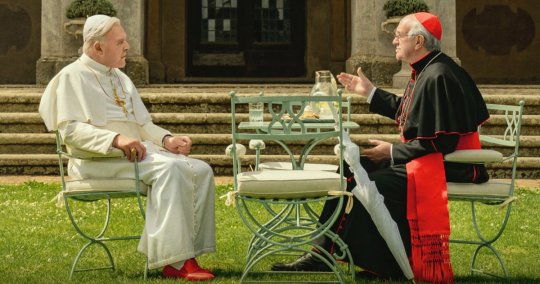
Incredible performances by Anthony Hopkins as Pope Benedict XVI and Jonathan Pryce as Pope Francis! I like that the film displays the religious ideological differences between the two popes and presents history of Pope Francis I did not know.
9. Richard Jewell

One of director Clint Eastwood’s best movies in recent years (it’s incredible he able to still produce such great work at nearly 90 years old). Intriguing true-life story I knew little about before the movie!
8. El Camino: A Breaking Bad Movie

An immensely satisfying continuation to the Breaking Bad series! Aaron Paul gives yet another fantastic performance returning to the role of Jesse Pinkman. Also, this film marks legendary actor Robert Forster’s final performance; may he rest in peace. I am anxious to see how the events of this film will impact Better Call Saul and future entrees in the universe.
7. Under the Silver Lake

I really like how the movie is essentially a modern Alfred Hitchcock thriller with similar style, tone, and music to films like Vertigo and The Man Who Knew Too Much. Andrew Garfield gives a good performance as well. I would like to see more cryptic mystery thrillers like this film.
6. The Man Who Killed Don Quixote

Yet again more great performances by Adam Driver and Jonathan Pryce. I myself am an independent filmmaker so I gravitate towards films like this one in which filmmaking is a major plot point. Filmmaker Terry Gilliam (Monty Python, Brazil, Fear and Loathing in Las Vegas) continues the style and tone of his previous work, so if you like his films, definitely check this out. The film had been in development for over 20 years so it is wonderful to see it finally completed.
5. Toy Story 4
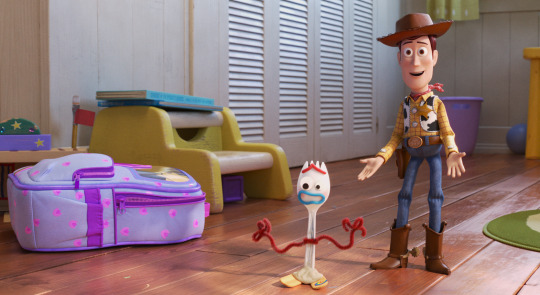
I have followed this series since I was 2 years old, so these films are very important to me. Toy Story 4 is a very satisfying conclusion to the series (assuming this is the last one)! It was so emotionally enthralling when Woody and Buzz decide to part ways in the end. I also like how the film continues the series’ tradition of pushing the boundaries of computer animation with this film having the most realistic CGI I have ever seen.
4. Doctor Sleep

When this movie was first announced, I screamed “No, please don’t ruin the legacy of Stanley Kubrick’s The Shining!” Boy, was I happily surprised to find Doctor Sleep to not only be a great movie but one that enhances the original film! I love how the film is stylistically identical to Kubrick’s Shining in many parts and that it uses spot-on lookalike actors instead of resorting to uncanny-valley CGI replacements (i.e. Carrie Fisher in Rise of Skywalker). When this movie eventually comes to home video, I want to watch it back-to-back with The Shining to see the “complete” work.
3. Joker
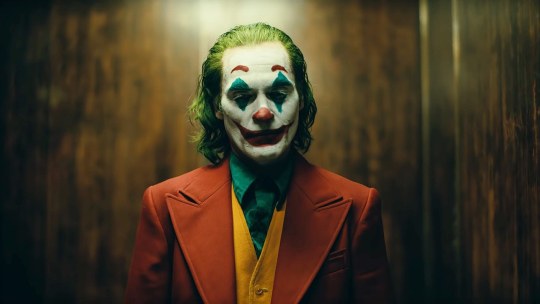
Joaquin Phoenix deserves awards for best actor for his powerhouse performance as The Joker! I also like that the film reminds audiences of the Occupy Movement since politics/media in recent years has tried to make everything “ant-Trump” instead of focusing on issues related to income inequality, which I believe is a more realistic problem our nation needs to address.
2. Parasite
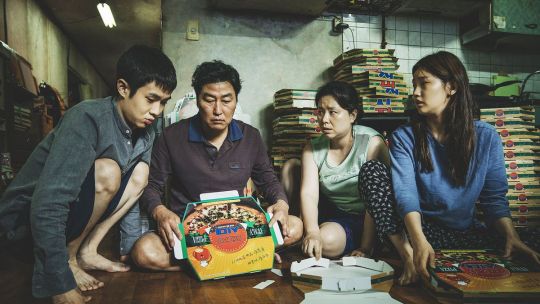
One of the best modern Asian films I have ever seen! Really captures how desperate people can get to improve their livelihood and how people of different socioeconomic classes perceive life.
1. The Lighthouse

Willem Dafoe and Robert Pattinson give incredible performances as keepers of a lighthouse in the late 1800s who gradually descend into madness. The cinematography is incredible with its use of black-and-white and 4:3 aspect ratio to make the film appear like it was shot in the era in which it takes places. Movie also is rich in symbolism and esoteric meanings that I will need watch again and again to pick up on. Definitely best film of the year!
#movies#movie review#film#top 10 lists#best of#best of 2019#lighthouse#parasite#joker#joaquin phoenix#doctor sleep#shining#stanley kubrick#toy story#adam driver#man who killed don quixote#jonathan pryce#under the silver lake#andrew garfield#richard jewell#clint eastwood#breaking bad#el camino#two popes#anthony hopkins#once upon a time in hollywood#quentin tarantino#leonardo dicaprio#brad pitt#peanut butter falcon
108 notes
·
View notes
Text
Having just finished Tevinter Nights, I have un fucktonne of questions and theories.
But, below are a few of the subjects/problems that I can’t stop thinking about. I’m curious how other people interpret them, or if I’ve missed some critical details, because it seems like there’s some retconning going on.
so, spoiler warnings apply, since i’m about to discuss the Big Doings below the cut.
The most immediately relevant items come from the final story, right? BUT, because of the nature of the characters, I sort of assumed that much of “The Dread Wolf Take You” is a study in unreliable narrators. Can any of the tales be believed after Charter exposes the Bard? Do we move forward assuming the puzzle pieces we’re trying to fit together are the correct ones, or tread carefully on the word of a known liar?
Nothing about the Assassin’s Tale fits the facts we know:
Meredith’s corpse didn’t actually stay in the middle of the square in uptown Kirkwall. Her remains were taken away to The Black Emporium. (iirc, Varric mentions this in one of the recent comics)
Pieces of her sword (Certainty) were re-forged for Samson to use in service of Corypheus, a sword which eventually passes to the Inquisition.
A shard of the idol continues to exist outside of Meredith’s remains, or her re-forged blade. Depending on worldstates, the shard is either a weapon rune--forged by Sandal and given to Hawke--or it was given to Varric (who then gave it to Bianca to study, I think).
In the comics, and in a few of the short stories, the fiasco of Fen’Harel’s agent losing the red lyrium “item” is cleverly handled from a lore-continuity perspective. It’s only ever referred to as a “weapon,” which could mean a lot of things, and allows for greater freedom in describing it in later media. Until the Assassin’s Tale, I firmly believed they were talking about Certainty. Now we’re supposed to believe it’s been the magically re-formed Primeval Idol this whole time, freshly revealed (by the equally untrustworthy Mortalitasi) as a go-go-Gadget ritual blade.
So, are the Tales a cheeky narrative lie, or is it all lore retcon?
If it’s a retcon...
-What ritual could the blade have originally served?
-Might it actually be a key, as lots of people have theorized?
-Is there really a potion that can melt lyrium?
-Does Solas actually have the idol now, or was his entire story a lie to cover the truth that he still hasn’t found it?
Also, uh. . .Can Solas just. . .kill people while they sleep/dream, even dwarves? I mean, he has demonstrated the ability to create a “dreamlike” state for a dwarf Inquisitor. But, this power seems OP, even for him, and narrative reach. Possibly it’s further evidence that nothing in “The Dread Wolf Take You” can be trusted.
1. If the plans for the Fade are already underway, what does this mean for people like Evangeline, Anders, Grandin, and Sigrid, who’re possessed by spirits/demons? It’s possible they’ll be forcibly separated. Those (like Evangeline) who’re only alive because of their spirit, will likely die. Without Justice, Anders might finally succumb to the taint.
There are probably thousands of people across Rivain and Seheron, and among the Avvar and the Dalish, who’re contentedly hosting spirits. Would these spirits allow their mortal hosts to be harmed by Solas? Or could there be resistance to his plan from the Fade side of things?
Lots of the stories in Tevinter Nights include the theme of outliers breaking ranks from within a seemingly monolithic society: the Ben Hassrath don’t support the Antaam in their campaign, the Venatori and their supporters operate in defiance of Tevinter, the Crows had one of their Talons disrupt a centuries-old pact.
Going forward in the next game, we might see a spirit faction that, for any number of reasons, acts against The Dread Wolf’s plan to sunder the Veil.
2. Why does everyone in this book describe the red lyrium idol as having only two figures, when every depiction of it that we’ve seen clearly shows three? The crowned figure is (if Solas is to be believed) comforting one person, but no mention of the other poor soul, an even more skeletal figure who seems to be missing their left forearm, and is stuck on the other side of the large ring. No love for that dingus, I guess. Very curious.
And no mention of the serpentine shape that surrounds all three of them.
3. The sea is going to be a big part of the next stage of this story.
-Mythal’s origin has her emerging from the sea.
-In “Luck in the Gardens, the 8 Venatori who were tasked with keeping the “formless” monster in its sealed prison each wore a clay amulet depicting a thin four-winged dragon rising above a sea.
-“The Horror of Hormak” describes the viscous gray transformation fluid (and the monsters it creates) as stinking of brine.
-The Mortalitasi’s Tale includes a reference to The Dread Wolf screaming about the Sea of Dreams.
-The Executors appear to be stepping into the action, finally. They are known as ‘those across the sea.’
-Among the murals discovered during Trespasser, there are some that include imagery of flowing water: The Death of a Titan, and Lifting the Vallaslin
-Before ascending to godhood, Ghilain’nain killed all of her creations. . .except the giant monsters in the deepest waters. Lore says “Pride stopped her hand,” which could mean that she spared them because she was too proud of how perfectly-made they were. Or, that an aspect of Pride (as a demon or spirit), convinced her to let them live.
4. I’ve always thought that the painted murals of Trespasser and those completed at Skyhold are actually of a different sort, in a very specific way. Much of the ornamentation, symbology, and iconography that’s used in the various frescoes in Trespasser. . .isn’t found in Skyhold’s frescoes.
My feeling, based on these differences in style, and the uneven quality of the paintings in the Vir’Dirthara, is that the murals in Trespasser have been painted-over.
-Thanks to Gatsi, we know that the mosaics we worked so hard to complete for the Inquisition were all re-carved by several hands over the ages, making it difficult to get an accurate interpretation from them.
-During “The Horror of Hormak,” Ramesh and Lesha encounter mosaics depicting elven kings and queens, and their subjects. But the mosaics shift and change the longer they stare at them. The scenes transform from a glittering parade of nobility offering succor to their subjects. . .to a death-march of tyrants forcing magical torments on their slaves.
-In “Genitivi Dies in the End,” our industrious well-traveled Brother is humbled when he discovers an elven tome that depicts the continent of Thedas in superior and, crushingly, more correct detail to anything he’s ever seen. Which means that either the continent has changed dramatically, or all the maps that exist in modernity are based upon a flawed (altered) source.
There’s an established trope of people from all parts of Thedas altering relics in order to change history’s interpretation of them. So, why would the frescoes/murals be any different? I believe that either Solas, or someone loyal to Solas, altered the murals in order to obscure the truth behind them.
If we believe Philliam, a Bard! (though, again, an unreliable narrator), the Qunari Rasaan disbelieves all of the names attributed to Solas, either by his enemies or himself. As Philliam posits, to know Solas’ true name would be know the best and worst of him, his flaws and weaknesses, and what he’d “failed to be.”
Essentially, I think we’re being misled at every turn. And this leads me to. . .
5. None of the stories in Tevinter Nights expands on the role of dwarves in past and future conflicts. We get lots of new and juicy stuff on Tevinter, Nevarra, mages, elves, the Crows, the Lords of Fortune, even the Qunari. Noticeably and glaringly absent is any mention of dwarves, titans, and how they fit into the unfolding lore.
One of the largest and most influential groups of dwarves in all of Thedas (The Ambassadoria) lives right in the heart of Minrathous. Above ground. Vulnerable to the invading Qunari and Fen’Harel’s agents.
Dwarves are as tellingly absent in this set of stories as dragons were in all the Evanuris revelations.
The one place where those two things intersect. . .is out in the Hissing Wastes, near the Sunstop mountains (which has always sounded to me like the same naming convention as Skyhold).
Out there, we come across a dwarven thaig, the only thaig to have been built above ground, that pre-dates the first Blight. It’s called Kal Repartha, which means ‘a place where we may meet in peace.’ Paragon Fairel and his sons appear to have built the thaig as a way to escape some huge conflict in the Deep Roads.
Statues of Mythal’s dragon form are arranged in places of honor outside Fairel’s tomb. As if in protection.
Fairel was a rune-smith, one of the greatest who ever lived. Mythal might have worked with Fairel toward some common goal, relying on his skills to make devastating weapons, runic keys for hidden places, or repositories of knowledge best kept secret. She might have protected Fairel as a respected friend and ally.
Reaching a little deeper, Mythal may have helped separate the ancient dwarves from the hivemind control of the titans, freeing them to create their own vibrant society, far from the “witless, soulless” existence they lived as drone-like workers.
(As an interesting aside, Fairel wrote about dragons, proving that dragons, dwarves, and the Evanuris existed at the same time)
It just seems like the root of this unfolding elven lore is the Titans themselves, the life they created in the dwarves and the tangible world, the innate power of their blood, and the knowledge that was stolen from them. Why don’t dwarves feature more heavily in the anthology?
That’s it. That’s my tinfoil haberdashery at the moment. Thoughts? Corrections?
14 notes
·
View notes
Text
CYBERVERSE WATCH: S3 Episode 17, 18, 19, 20
Episode 17
Oh nooo Windblade u good??? LASERBEAK AND WINDBLADE OMG!!!

Beaky please don’t peck my girl (that is kinda cute though)
Windblade she isn’t a pest!!!
Laserbeak watches her fly off like “I get no respect and no thanks???”
HECK YEAH GET THEM FLIERS!!! Jetfire please be careful bud, Starscream has some old beef with you
OH NO ALL THE ALTERNATE UNIVERSE SOUNDWAVES
The only downside to knowing all these characters and getting excited about cameos is it’s that many times more likely that a character I like will die 8(
YEAHH WAY TO GO LASERBEAK you’re the real MVP
JEEZ HE GOT OPTIMUS RIGHT IN THE CHEST
HEY CAN SOMEONE PLEASE SAVE OPTIMUS
OH SHOOT WHO IS THAT
OH FRICK OH FRICK ITS MEGATRON!!! HELL YEAH
Megatron, a million universes away: My “Optimus is in trouble” and “Starscream is being a menace” senses are tingling, gotta go back to Cybertron
FRICK that was a cool entrance
Oh man what happened to his eye--HOLY FRICK HE LOOKS HOT
AYYYYYY ITS THE OG BLACK HELMET MEGATRON LOOK AHHHHHHHHHHHHHH
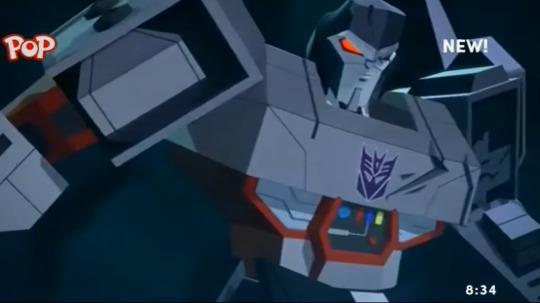
MAN I FRICKIN LOVE MEGATRON
KUP NOW ISN”T THE TIME FOR YOUR COMMENTARY (that was cute though)
Oh my gosh when Starscream started to say “You’re too late to save your--” for one very frightful minute I thought he was going to say something about Optimus like “partner” or something and I felt every muscle in my body tense up lmao, I should’ve known better but RATS
WHAT
WHAT THE FRICK THAT WAS SO FRICKIN COOL
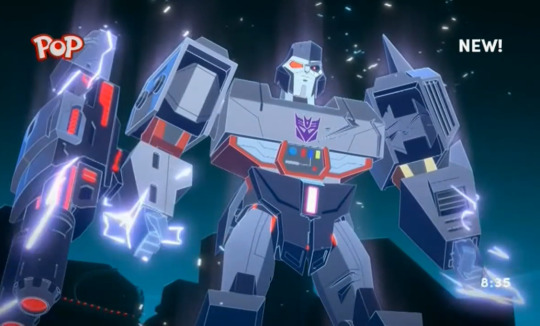
IS THERE ANYTHING HOTTER THAN WAKING UP TO SEE YOUR OLD FLAME STANDING OVER YOU GLOWING LIKE A VENGEFUL ANGEL ABOUT TO KICK STARSCREAM’S BUTT
POWERS OF CYBERTRON UNITE??!?!?!?!?
EVEN OPTIMUS GOT SOME
BOYFRIENDS PUNCHING STARSCREAM’S ARMY OF QUINTESSONS TOGETHER!!!! SHADOWSTRIKER!!! BEE AND SOUNDWAVE!!!! GOSH THIS IS SO GOOD
WRECK THEIR SHOP SOUNDWAVE!!!!!!!!!!!!!!
Starscream you’ve sentenced them like five thousand times what’s new about this OH RIGHT I FORGOT ABOUT THAT GLOB STUFF
ASTROTRAIN!?!?!?!?
Starscream: NO ONE CAN STOP ME
*CUTS TO WINDBLADE* wanna bet nerd

I LOVE my beautiful girl
Oh that is some nasty looking Quintesson tech
Uh oh u good Windblade???
Croaton can you please slap Starscream out of the sky before you leave it’d save us a lot of time
Aw man I wonder what Megatron saw that made him sorta regret the stuff with Starsc
WH
HE”S BARING HIS SPARK!?!?!? WAIT IS THAT ANOTHER MATRIX
ARE THEY GONNA FUSE????
MEGATRON PRIME
GOSH I REALLY THOUGHT THEY WERE GOING TO FRICKIN SPARK FUSE THERE FOR A SECOND
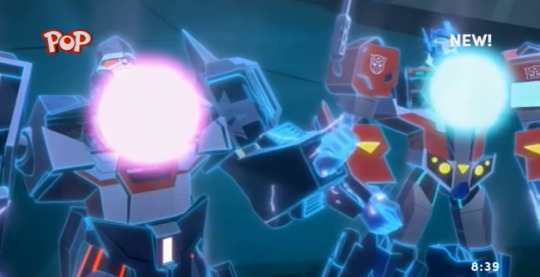
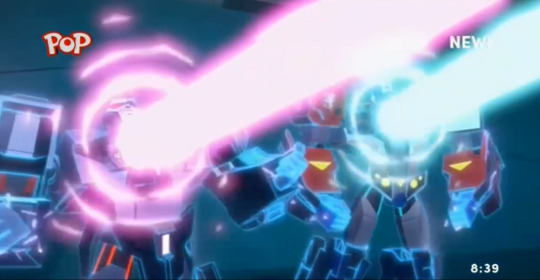
*CUE “THE POWER OF LOVE” AT FULL VOLUME*
Ok but what the heck did Astrotrain do???
If you get along with someone you don’t like the universe probably won’t end pfft, thanks Kup
CREEPY BUGS???
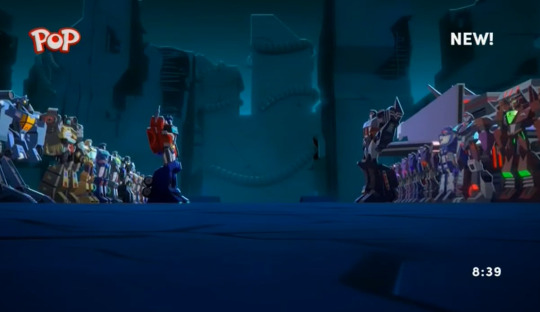
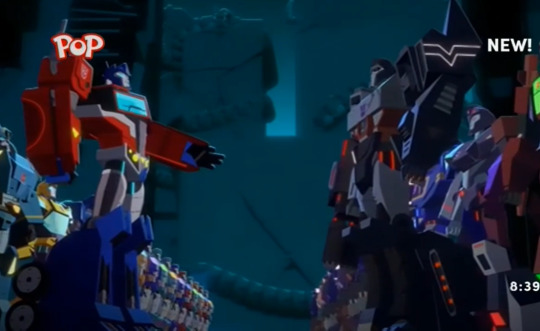
Megatron please take his hand :(((
IM LOSING IT MEGATRON REALLY IS A HUGE KID
*takes out a piece of chalk and draws a line between them* this is MY side of Cybertron, this is yours
guess galavanting through space didn’t change him TOO much

Guhhh these opposing sides shots always break my heart I WISH THEY COULD OVERCOME THEIR DIFFERENCES AND BE FRIENDS AGAIN SOMEHOW....
Dang Astrotrain is HUGE compared to the rest of the bots, I wonder what he looks like in bot mode
SO MUCH HAPPENED IN THAT EPISODE (and I had to take a break in the middle of it) I FORGOT I STILL HAD THREE LEFT thank the stars
I genuinely can't believe Megatron essentially drew a line between him and Optimus and went "This side of Cybertron is MINE, the other side is yours"
*cue shenanigans of Autobot and Decepticon buddies trying to secretly cross the line to visit their friends in the other faction*
gosh fanfic always depicts Megatron and Optimus sneaking around meeting each other for smoochies I'd LOVE to see their subordinates being the ones doing the sneaking around while Megatron and Optimus are just like "GUYS....". Fingers crossed for the next episode!
Episode 18
CYBERTRON LOOKS SO PRETTY....
oh my gosh they actually built a wall
WAIT DID CLOBBER SERIOUSLY SWITCH SIDES OMG SHES AN AUTOBOT NOW
WHAT BEE CAN FLY!?!?!? WHAT!!!
LMAO LOCKDOWN NICE BOARDER PATROLLING
Well it took all of 30 seconds to confirm my theory lmao man I frickin love this show
Man I can’t believe how quickly they beat the Quintessons, I REALLY THOUGHT THE AUTOBOTS AND DECEPTICONS UNITING AGAINST THEM WOULD BE THE BIG SEASON FINALE I’m thrown for a loop now lol
ew those colors remind me of Sentinel Prime I hope that’s not him
OH WAIT IS THAT IACONUS MY BAD
PRIMA???? OH?????
Grand Imperium?????
Omg did Rack’nRuin switch sides too? I thought they were Decepticons
JETFIRE COME ON BUD OPTIMUS IS TRYING TO HAVE HIS MOMENT
Croaton city!!!
LMAO SKYBITE’S SHARING HIS POETRY....CUTE...
But where is Soundwave!!!!!
I’m with you Bee, those insects are creepy
WOW ASTROTRAIN IS HUGE
“And WHO rescued you from that tyrant” OH??? ANOTHER UNIVERSE’S MEGATRON MAYHAPS???
“I must know if the barrier holds!” OH!!!! Oh no is the final battle gonna be against all the other universe’s people who Megatron burned as he gallivanted through the multiverse??? I SURE HOPE SO
Gosh not to be predictable but that new armor looks so frickin good on Megatron
OPTIMUS IS SO STRONG
POOR OPTIMUS....
“During wartime, decision-making came so easily” MAN....THAT HURTS.....
oh he’s looking for Windblade!!!
AW SHADOW STRIKER C’MON, I THOUGHT YOU GUYS WERE BUDS NOW
“I know better than ANYONE what it’s like to be left broken on the battlefield. I did what I could” MY HEART JUST SWELLED THREE SIZES FOR SHADOW STRIKER....I LOVE HER....(ALSO THAT HURT)
Bee it REALLY seems like you should’ve had a plan / backup team for this!!!
BEE YOU’RE GONNA RESTART THE WAR!!
RODIMUS!!! YOU’RE BACK TO YOUR RED FLAME SELF!!!
WHIRL!!! OMG MY BABY
Wow that wall does a crummy job of keeping out fliers
SOMEONE PLEASE CATCH WINDBLADE
Thank you Whirl
OH JEEZ HERE COMES MEGATRON
SKYWARP!!! (I say while being super scared for my faves)
Whoa Megatron actually backed down
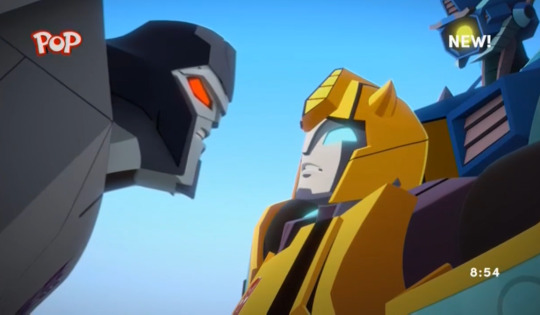
Nice
CHROMIA!!!! SAVE HER PLEASE
Episode 19
Ohhh are we gonna get to see Caminus??????
BEAST MACHINES?????
omg they’re gonna have to collect Windblade’s mind like they collected Bee’s memories
Chromia that doesn’t sound too convincing (you’re super cute though so I forgive you)
MORE BIRDIES!!!
A CYBER HORSE????
IT”S A JET!?!??!
OH MY GOSH OH MY GOSH OH MY GOSH IT”S CRYSTAL CITY!!!!!!
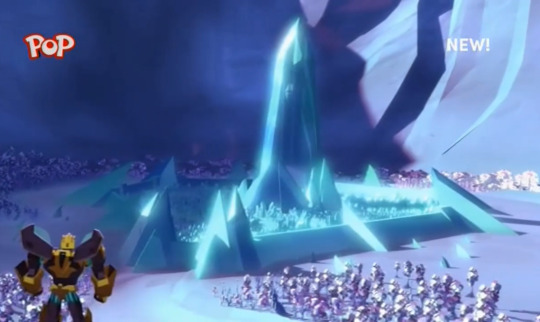
AGAIN, I WANNA SHAKE HANDS WITH EVERY BACKGROUND DESIGNER WHO WORKED ON THIS SHOW
OHHH mirror selves!!! Scary but pretty!!
OH MY GOSH!!! IS THAT RAVAGE!?!?!?!?
PLEASE LET ME SEE MY LITTLE BOY!!!!! AHHHHHHHHHH
AHHHHHHHHHHHHHHHHHHH!!!!!!!!!!!!! PLEASE BE RAVAGE
HOLY FRICK THAT LOOKED AWESOME??? KNIGHT??? A REALLY COOL KNIGHT???? WHO ARE YOU
Thunderhow??
My first thought was “Someone got their Warriors Cat oc into Transformers” and that cracked me up
KNIGHT OF THE PRIMES???
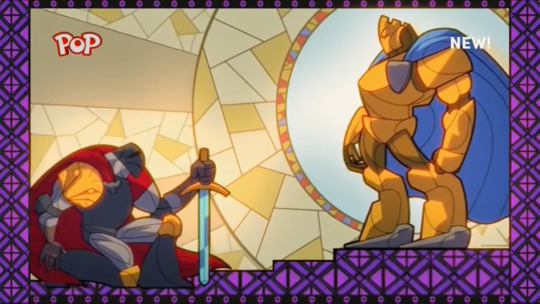
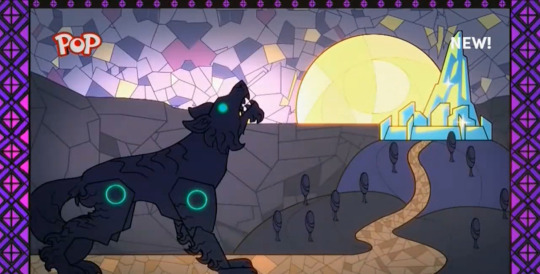
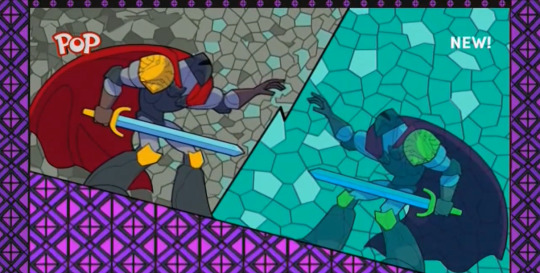
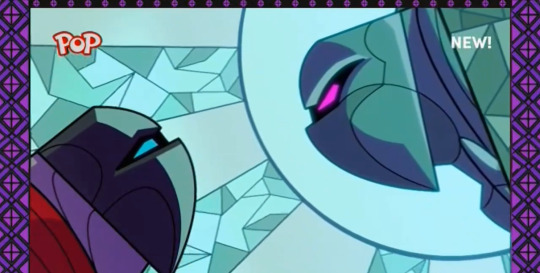
THIS STAINED-GLASS STYLE ANIMATION IS GORGEOUS
I like this dude but something tells me they’re gonna have to fight / kill him later
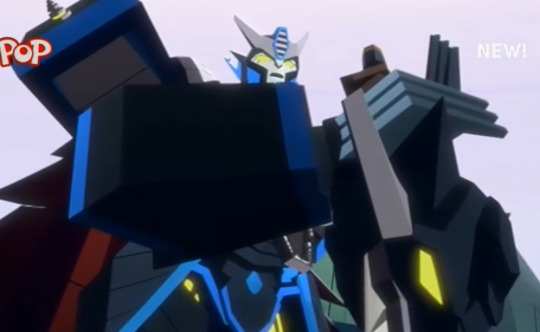

Bee’s smile is so cute!!
lmao nice lore-speak Chromia
They should just blast through the walls of the maze
“That sounds like a nightmare”
“Scrap that!” THEYRE SO CUTE omg way to break the rules you two
CRYSTAL WINDBLADE!!!!
oh shoot many crystal windblades
I love the little “tink tink tink” sounds her feet make
Just her arm???? Jeez louise are the rest of the episodes gonna be about collecting Windblade?
Oh it’s Thunderhound
Optimus is just like “PLEASE leave me alone”
Petition for Optimus Prime to just get a frickin vacation
Episode 20
Man I’m so sad this series is almost over
Everyone in Mac’s bar without Mac..... :( Cute to see Percy as the bartender though
IS...IS THAT WHEELJACK?
OMG WAIT THAT”S THE COSMIC RUST WHEELJACK BACK FROM LIKE EP 2 or 3 IN SEASON 1????
“The Past” I FRICKIN KNEW WE’D SEE YOU AGAIN!!! IT WAS TOO WEIRD HAVING HIM WANDER AROUND IN AN EPISODE WITH NO EXPLANATION LIKE THAT
COWBOY WHEELJACK IS SO GOOD
Man Cyberverse is so frickin weird, I love this cartoon
Oh there’s my boy Soundwave
JEEZ THIS DUDE’S GOT NO FEAR
Megatron looks so cute...
“This is Autobot territory! You can’t--oh guess you can” pfft
I can’t believe Transformers is a western now
Optimus is the sheriff around these parts lol
Aw man Optimus JUST put that thing in there
OPTIMUS IS SO STRONG....I LOVE MY BUFF BOY
WILDWHEEL? Oh my bad, guess that’s not Wheeljack
“No one ever tried to find me” :(((( I wonder how many other bots felt that way
“I was one of the good guys! But you left me on that planet!” OW....
Pretty terrible shot Wild Wheel
OH NO....Innocent civilian got hurt, now Optimus is serious
Wild Wheel Optimus has been through a WAR your cowboy training aint gonna cut it
WELL THAT WAS A. WEIRD EPISODE. ALRIGHTY THEN I can’t wait to see how Wild Wheel is going to pop up in future episodes
Me: haha evil cowboy robot
Wild Wheel: I felt abandoned because no one searched for me and I was forced to do horrible things in order to find my way home
Me, tears streaming down my face: Haha....cowboy robot
8 notes
·
View notes